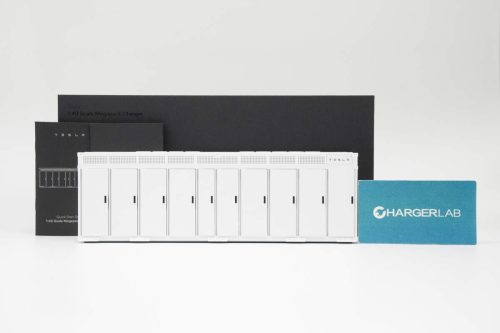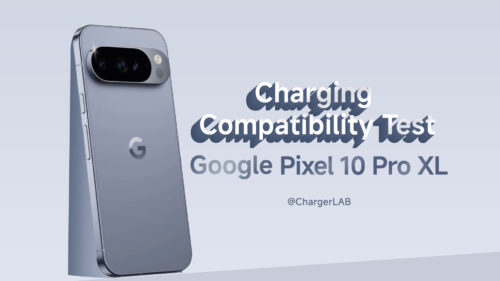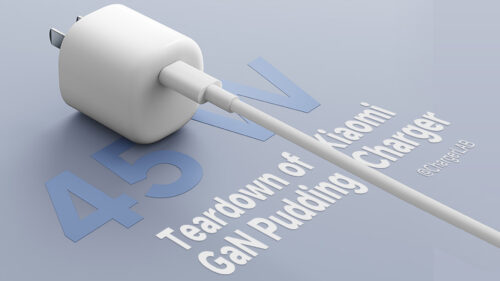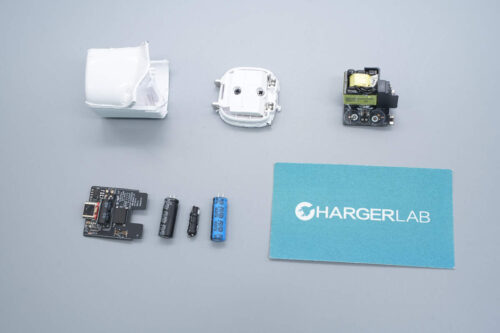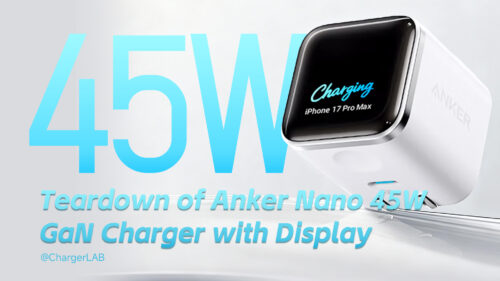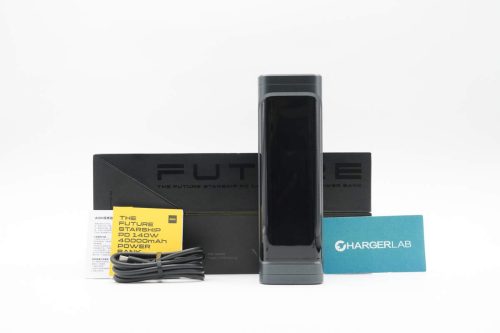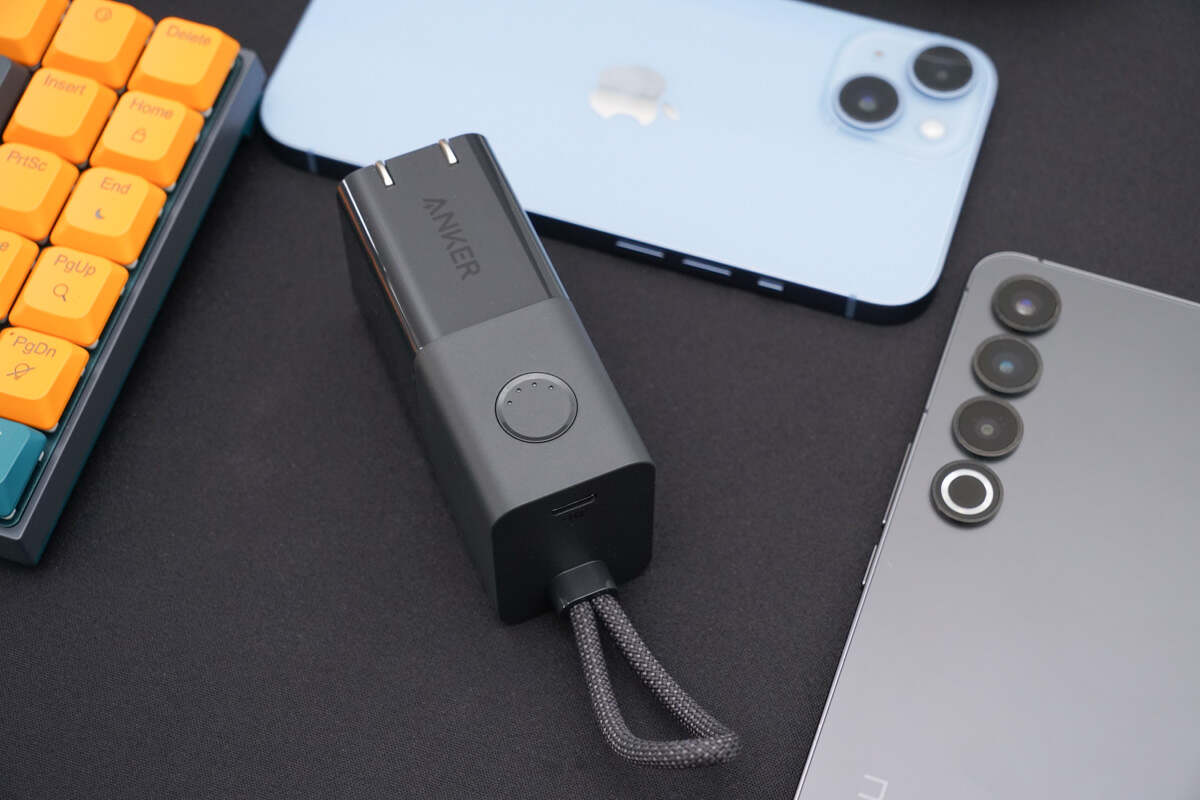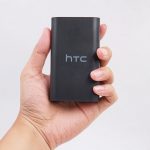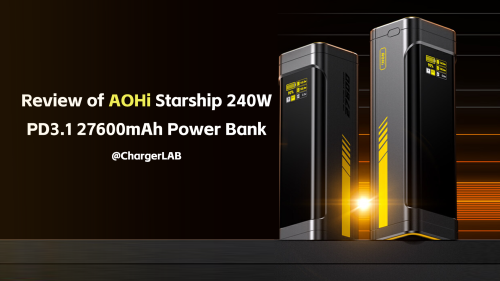Introduction
Tesla's Megapack is a utility-scale energy storage system designed for large-scale applications such as public utilities and major enterprises. Featuring a modular, containerized architecture, it integrates batteries, inverters, thermal management systems, and intelligent control software—all in one compact unit. Compared to traditional solutions, the Megapack installs 10 times faster and occupies 40% less space, with performance continuously enhanced through over-the-air (OTA) updates.
Recently, Tesla introduced the 1:40 Scale Megapack Charger, a portable power bank inspired by the iconic Megapack. This meticulously crafted 1:40 scale replica transforms the industrial design language of grid-level energy storage into a consumer-friendly aesthetic. Let’s take a closer look at how this unique device performs.
Product Appearance
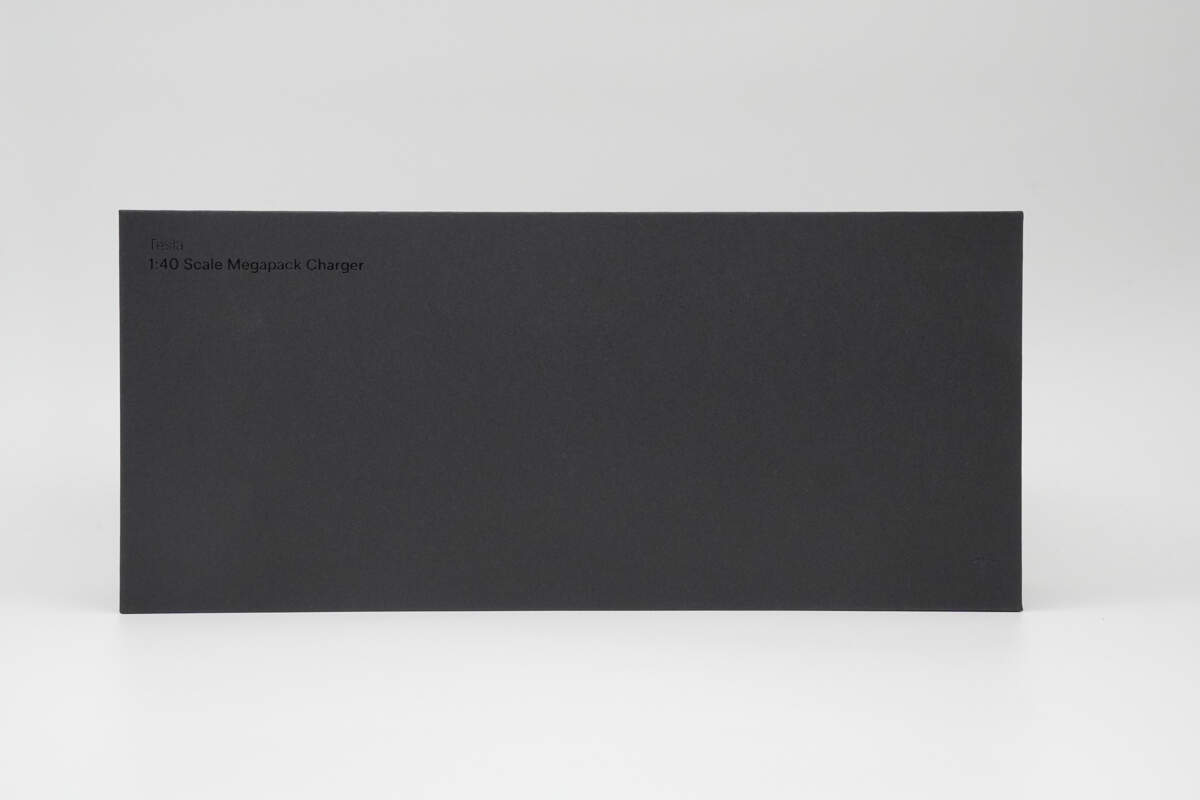
The packaging box is pure black, with the TESLA 1:40 Scale Megapack Charger printed in the upper left corner.
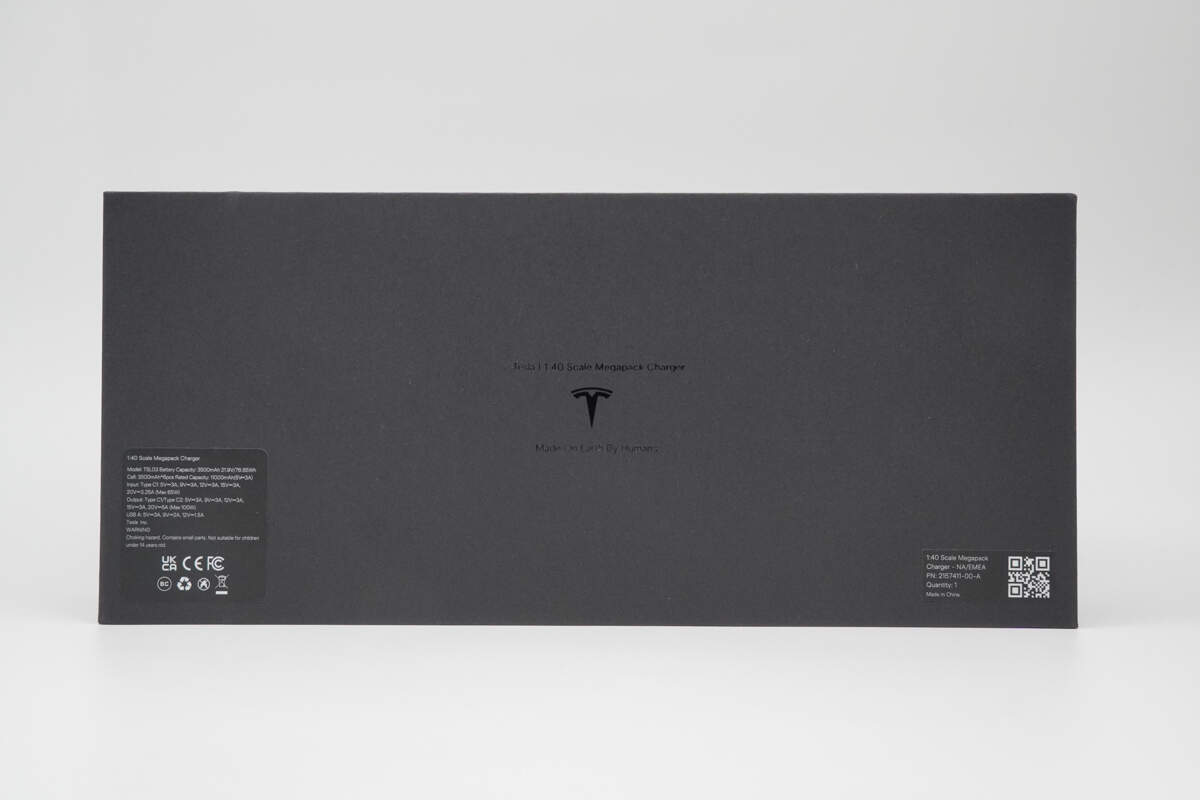
The Tesla logo is printed in the center of the back, and specs info and a QR code are affixed to the lower left and right corners respectively.
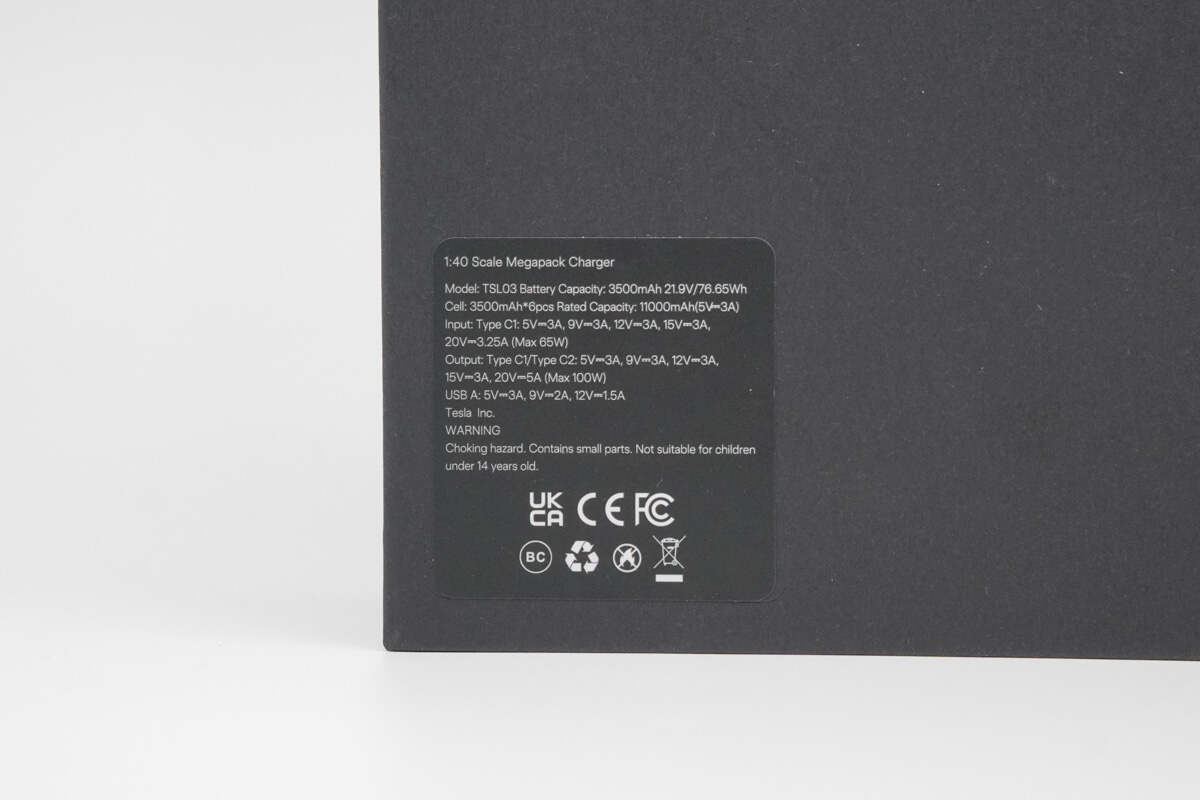
Model is TSL03.
Battery Capacity: 3500mAh 21.9V/76.65Wh
Rated Capacity: 11000mAh(5V3A)
USB-C1 Input: 5V3A, 9V3A, 12V3A, 15V3A, 20V3.25A (Max 65W)
USB-C1/USB-C2 Output: 5V3A, 9V3A, 12VЗA, 15V3A, 20V5A (Max 100W)
USB-A Output: 5V3A, 9V2A, 12V1.5A
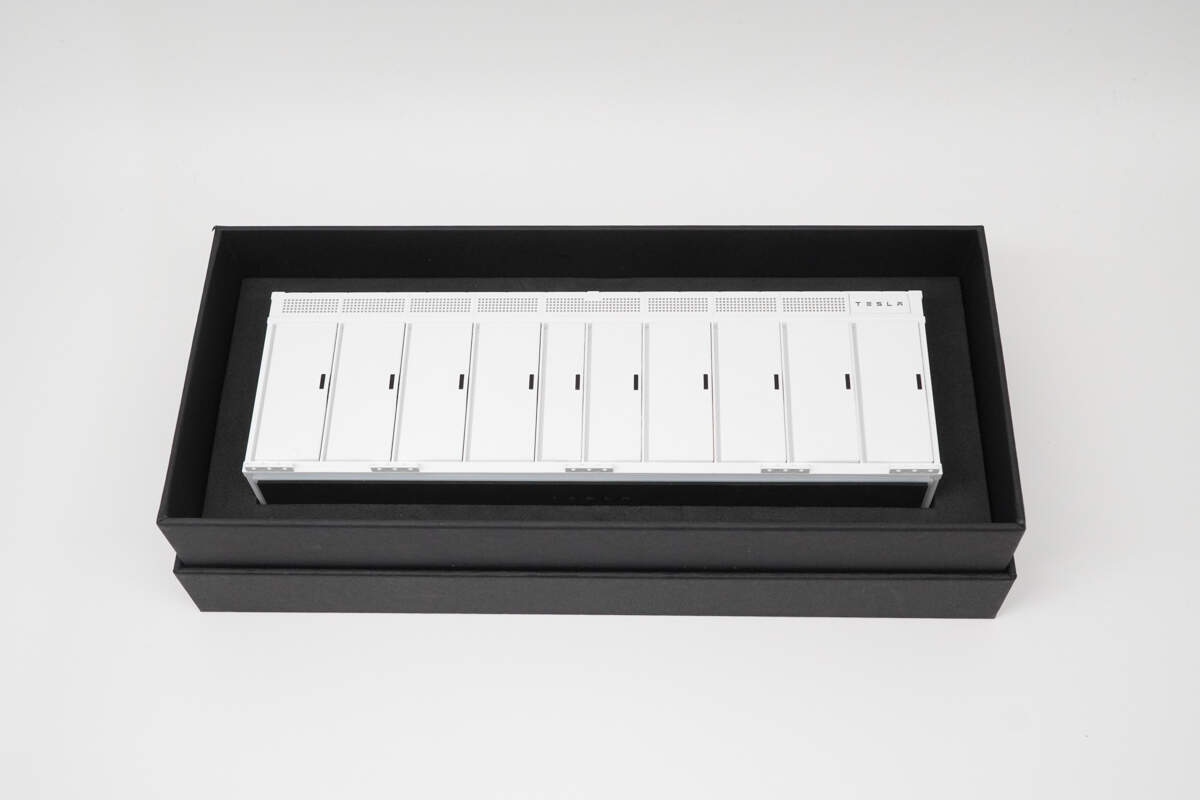
Open the package and you will see the pure white power bank.
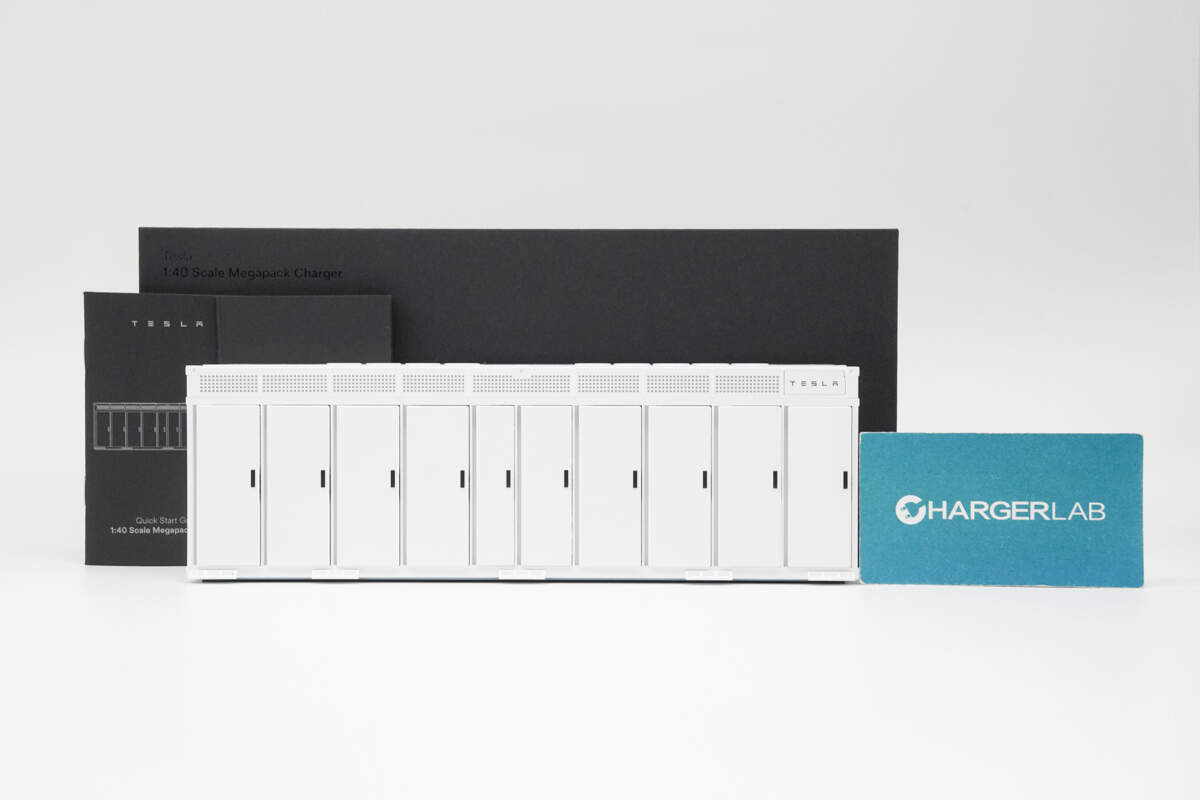
The box contains the power bank and some documents.
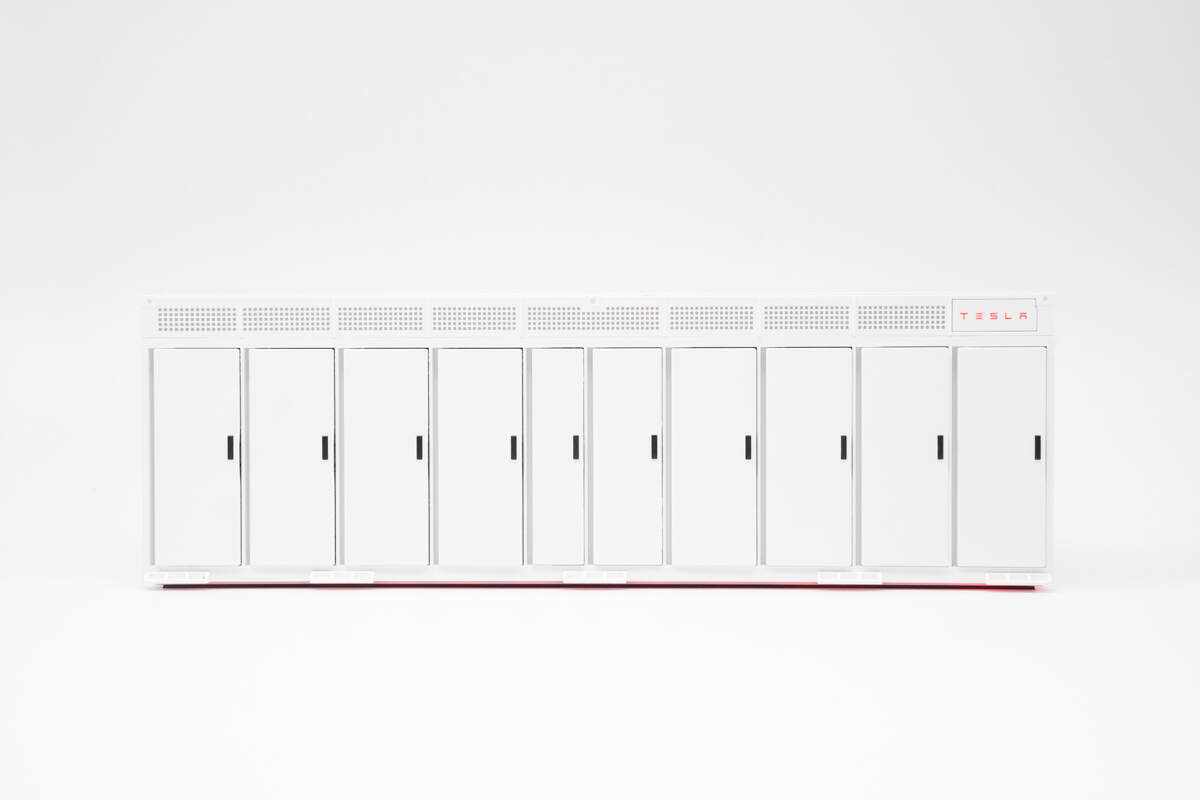
The power bank faithfully replicates the iconic design of the Megapack energy storage system at a 1:40 scale. It features a sharply defined rectangular silhouette with a matte metallic finish, capturing the industrial essence of its full-sized counterpart. A Tesla logo is embedded in the upper-right corner, which, when powered on, is illuminated by a red ambient light—matched by a similar glow from the base of the device.
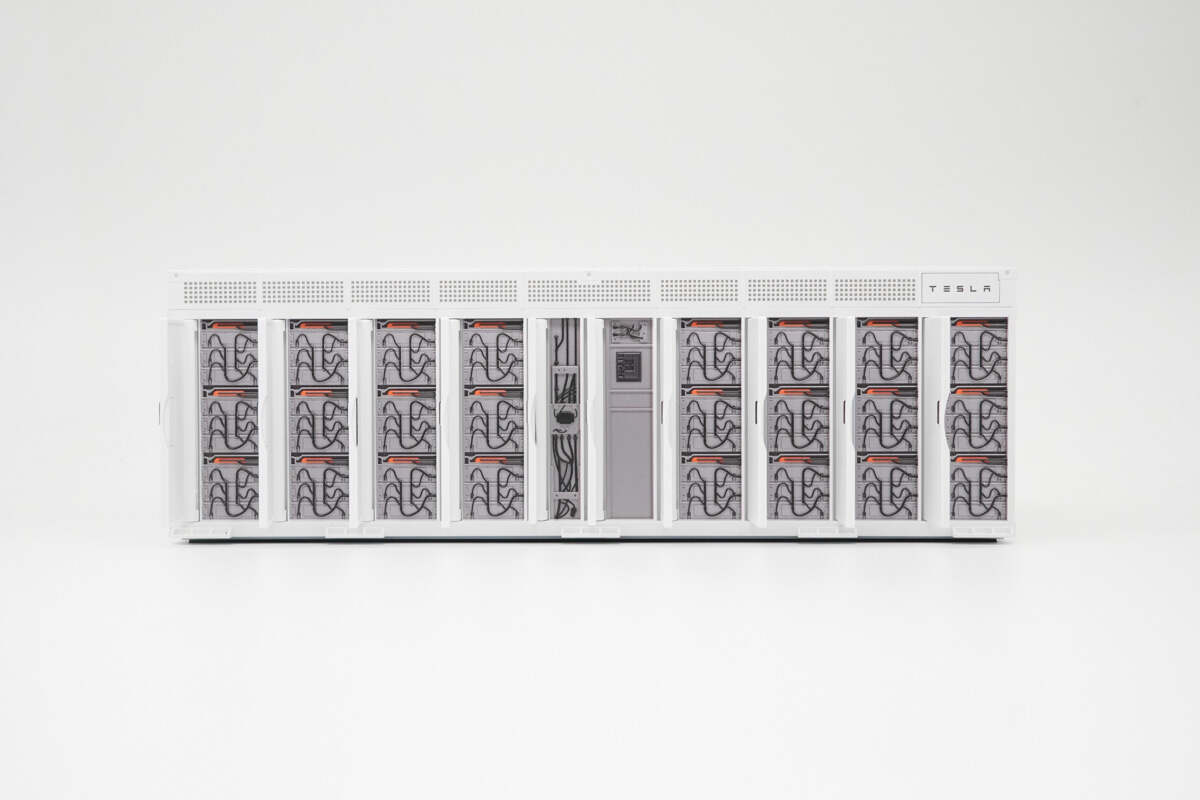
All service access panels are movable components, revealing intricately detailed replicas of internal battery packs and wiring once opened—showcasing impressive craftsmanship and attention to detail.
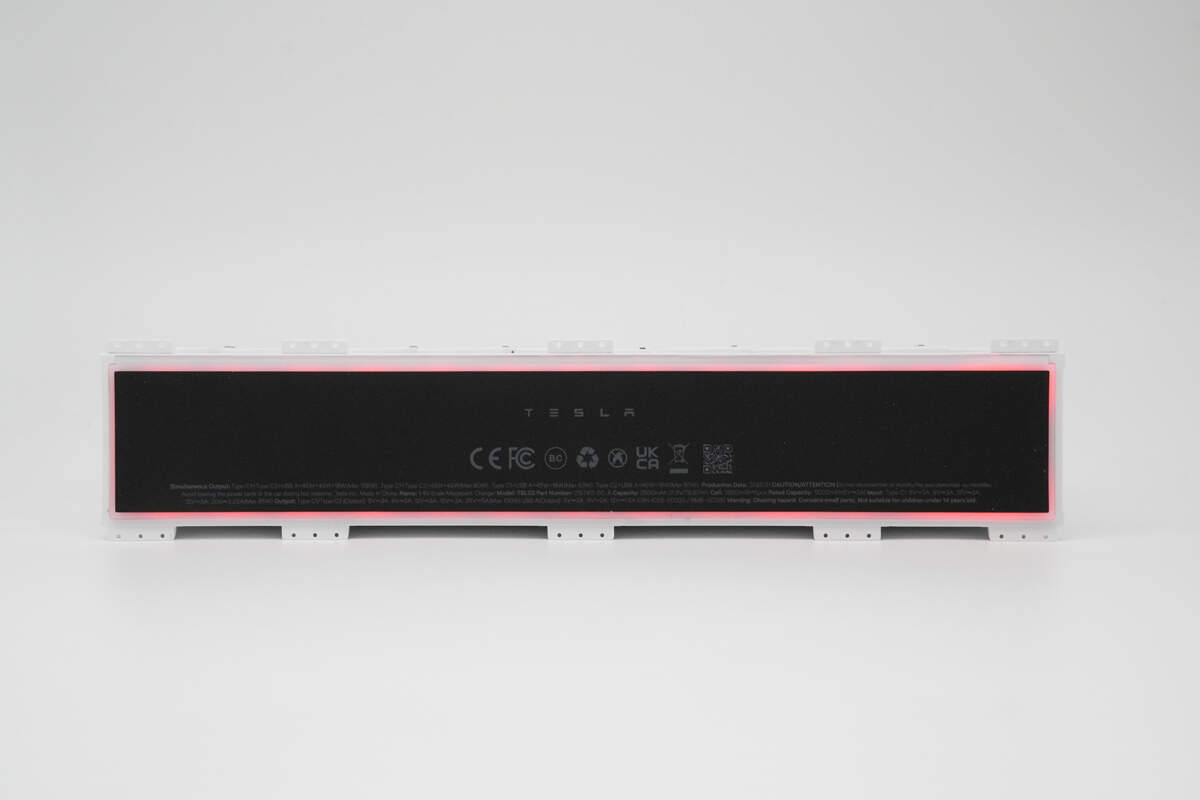
On the underside, a full-coverage rubber anti-slip pad ensures stability and is encircled by an LED light strip.
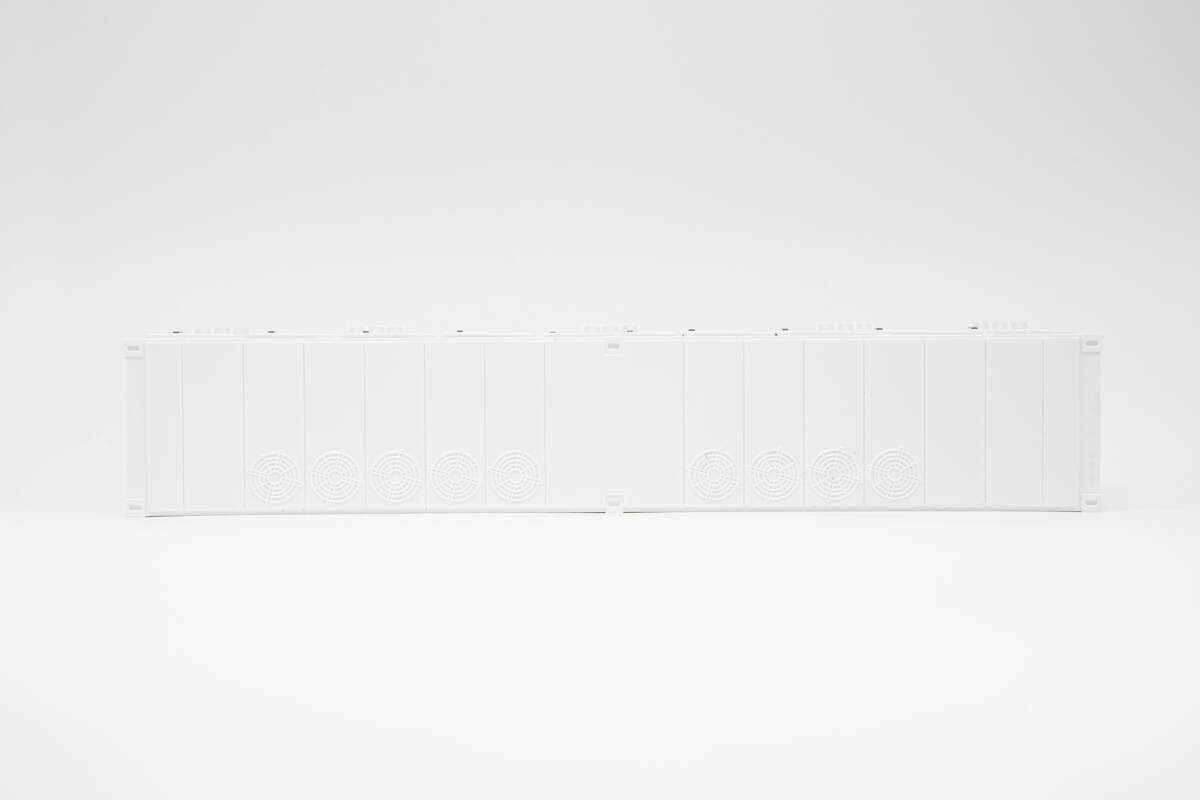
The multiple cooling fans on the top deeply restore the Megapack.
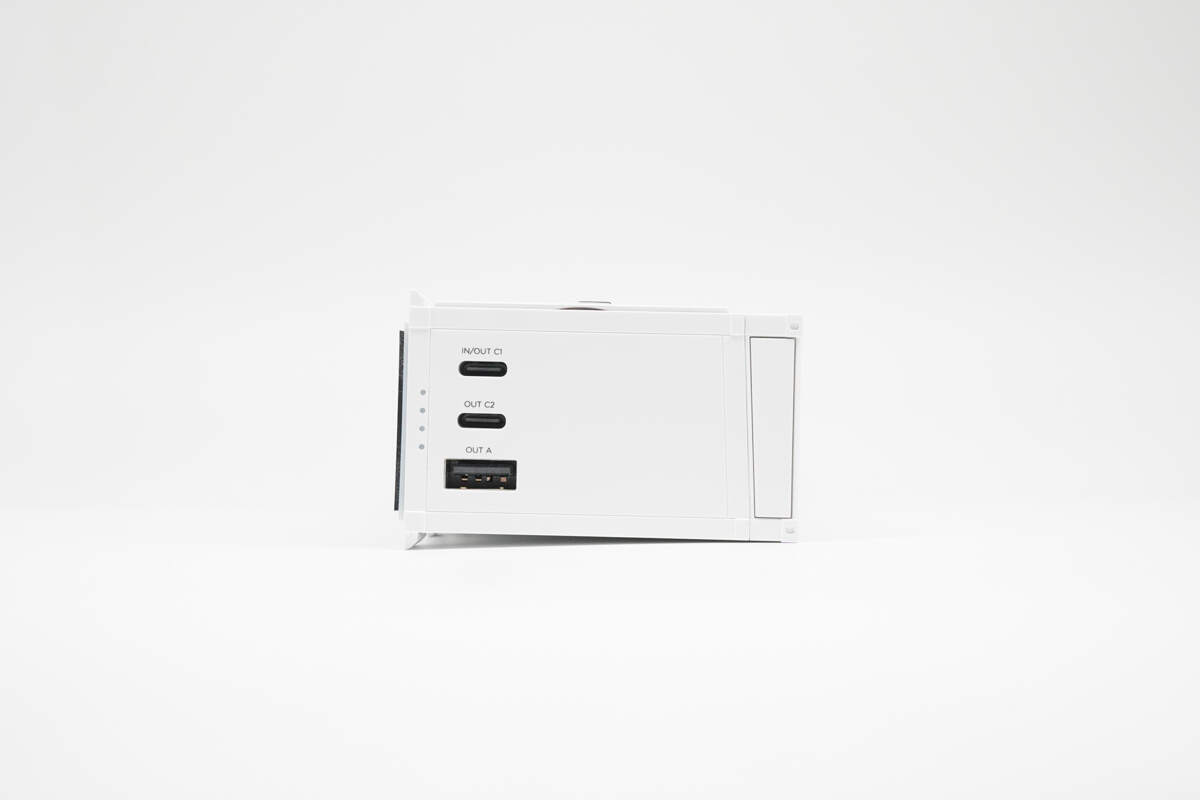
The plastic sheets of the two USB-C and one USB-A port are black. The right side has four LED indicator lights, and on the right is the power button.
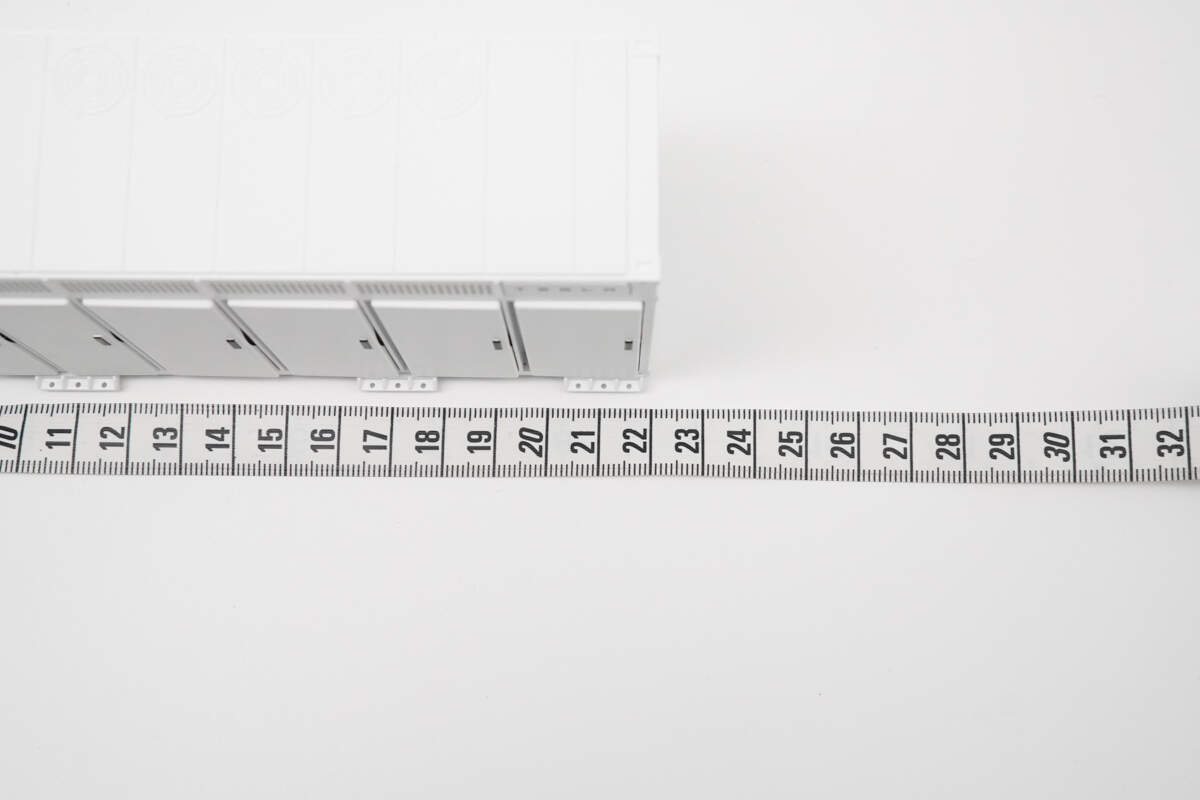
The length of the power bank is about 22 cm (8.66 inches).
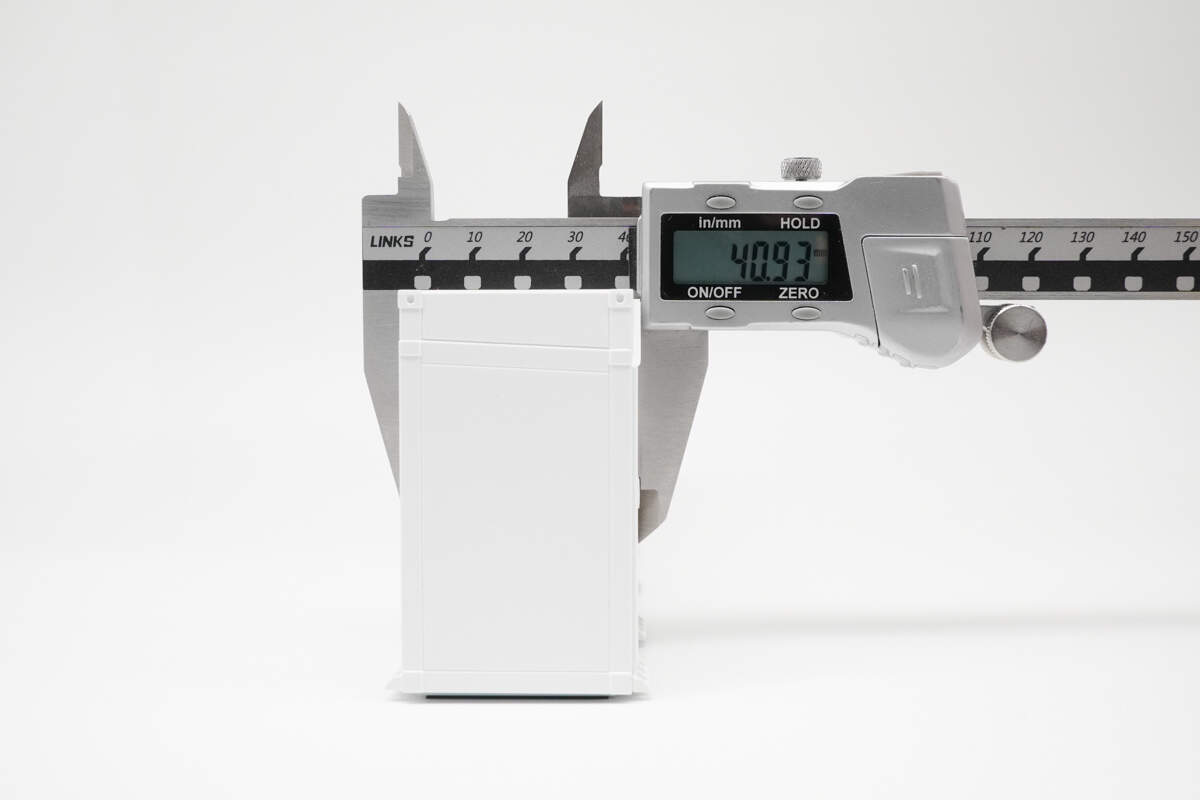
The width is about 40.93 mm (1.61 inches).
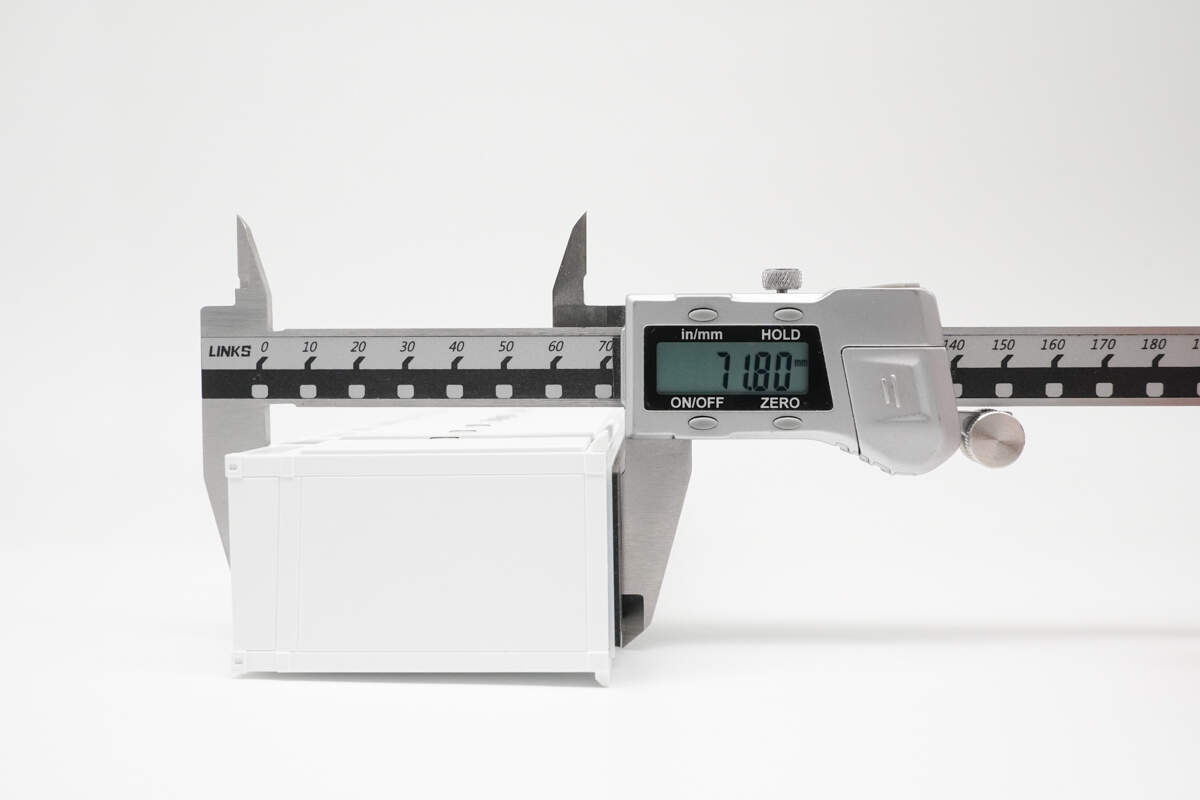
The height is about 71.8 mm (2.83 inches).
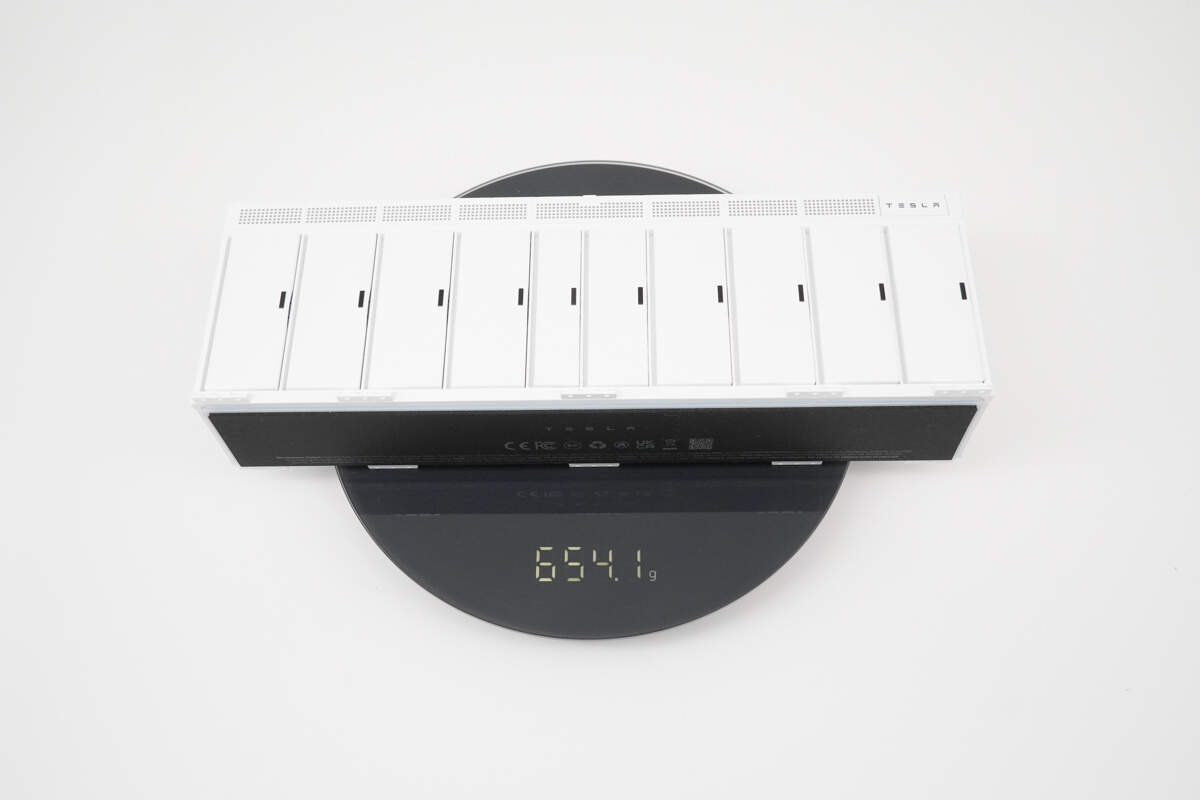
The weight is about 654.1 g (23.073 oz).
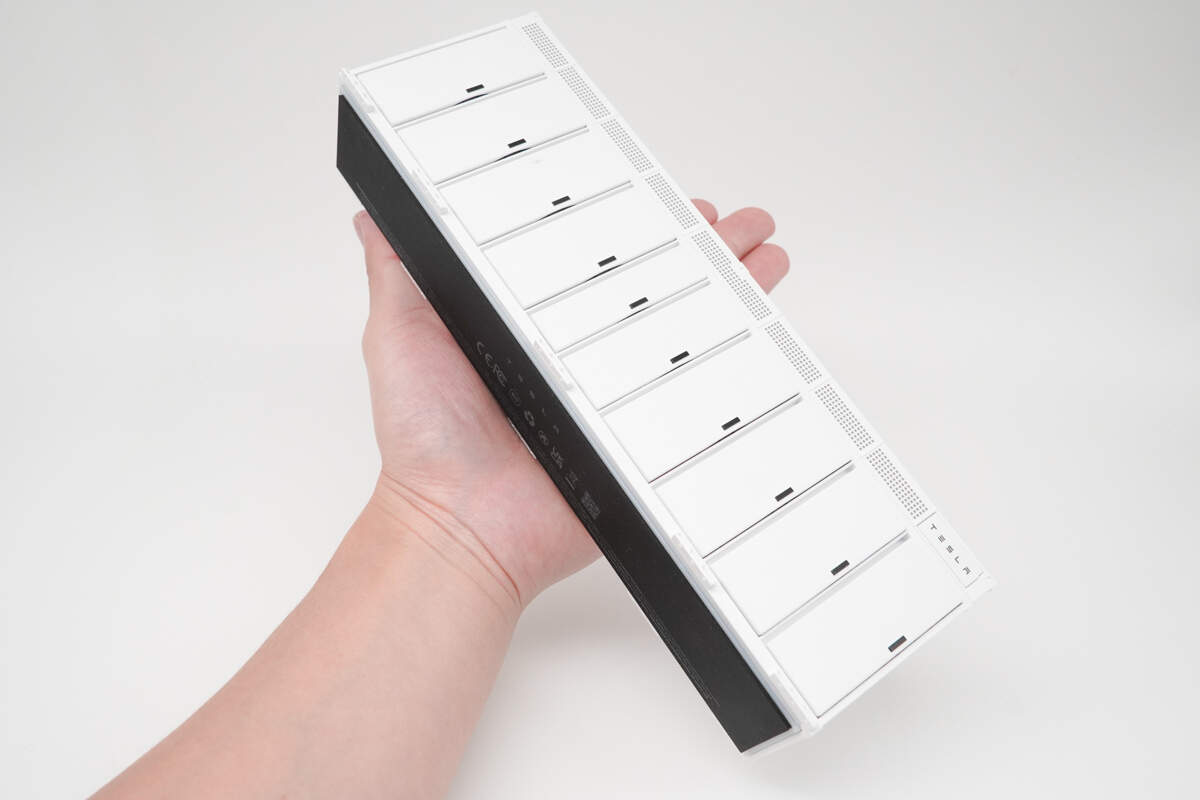
That's how big it is in the hand.
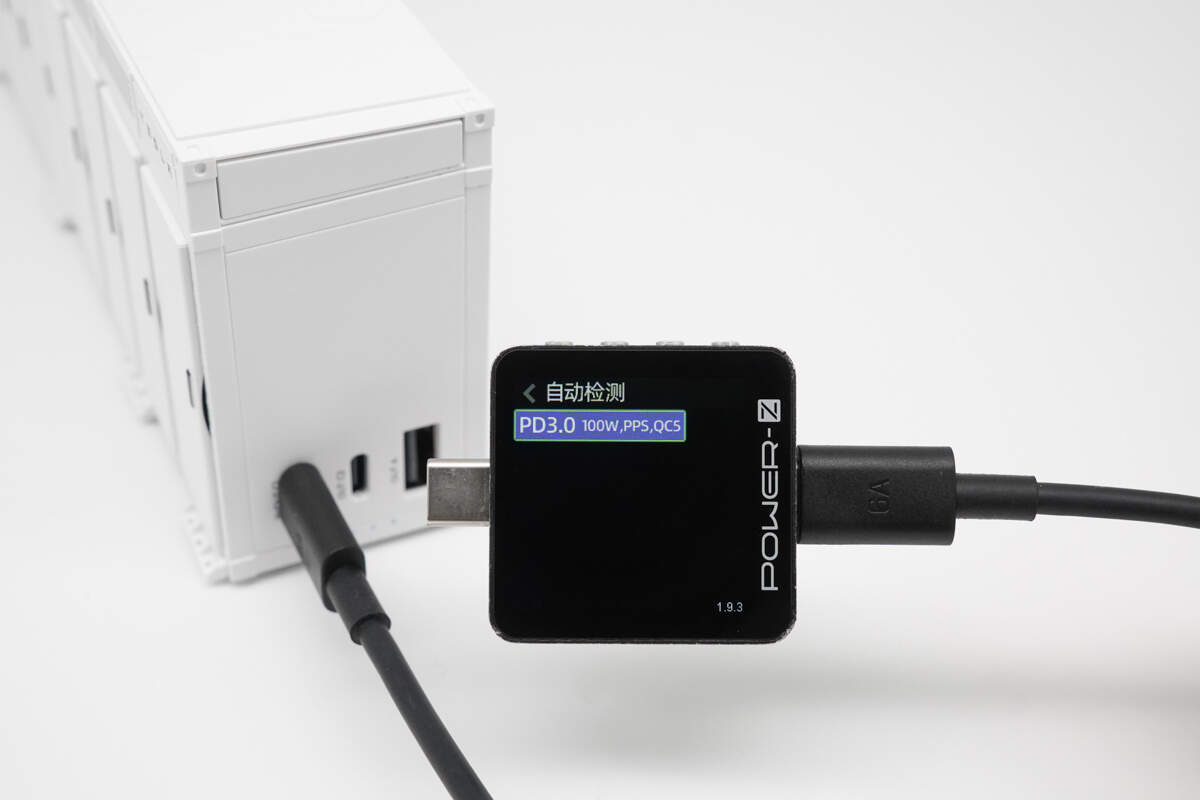
ChargerLAB POWER-Z KM003C shows that USB-C1 can support PD3.0, PPS, and QC5 charging protocols.
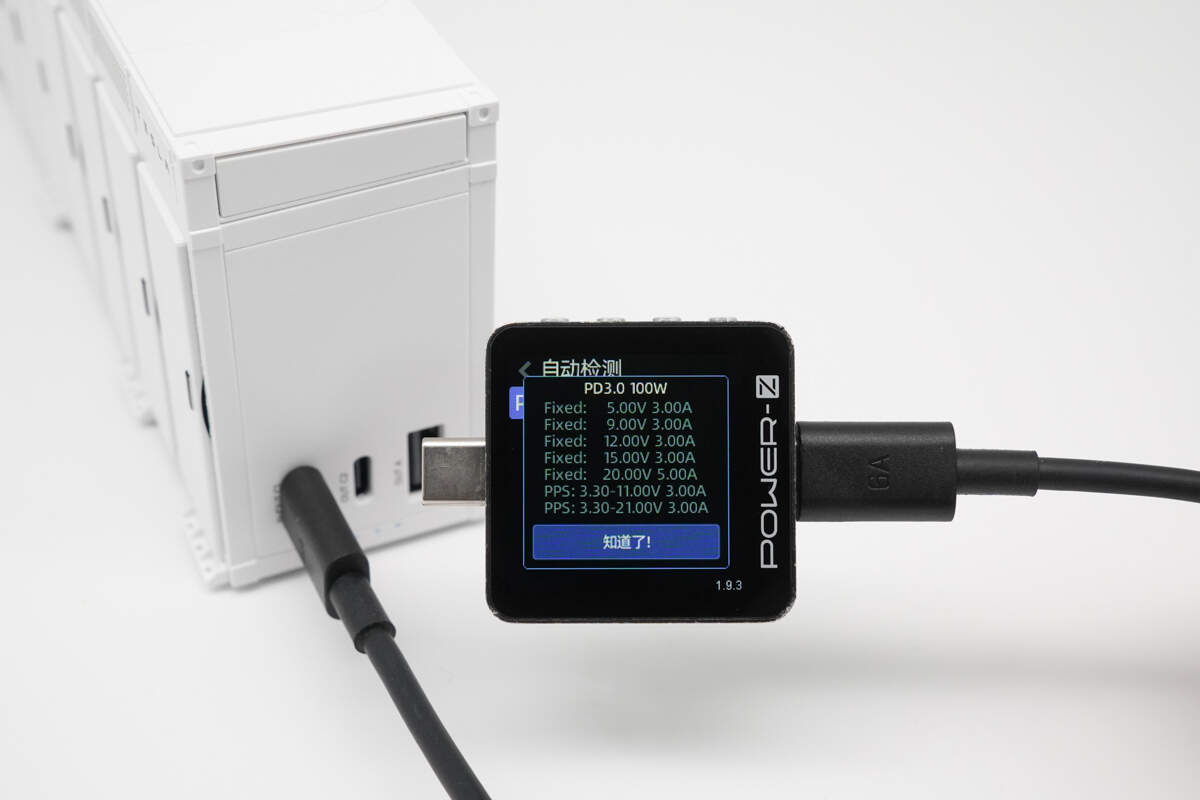
And it has five fixed PDOs of 5V3A, 9V3A, 12V3A, 15V3A, and 20V5A. It has two sets of PPS, which are 3.3-11V/3A, and 3.3-21V/3A.
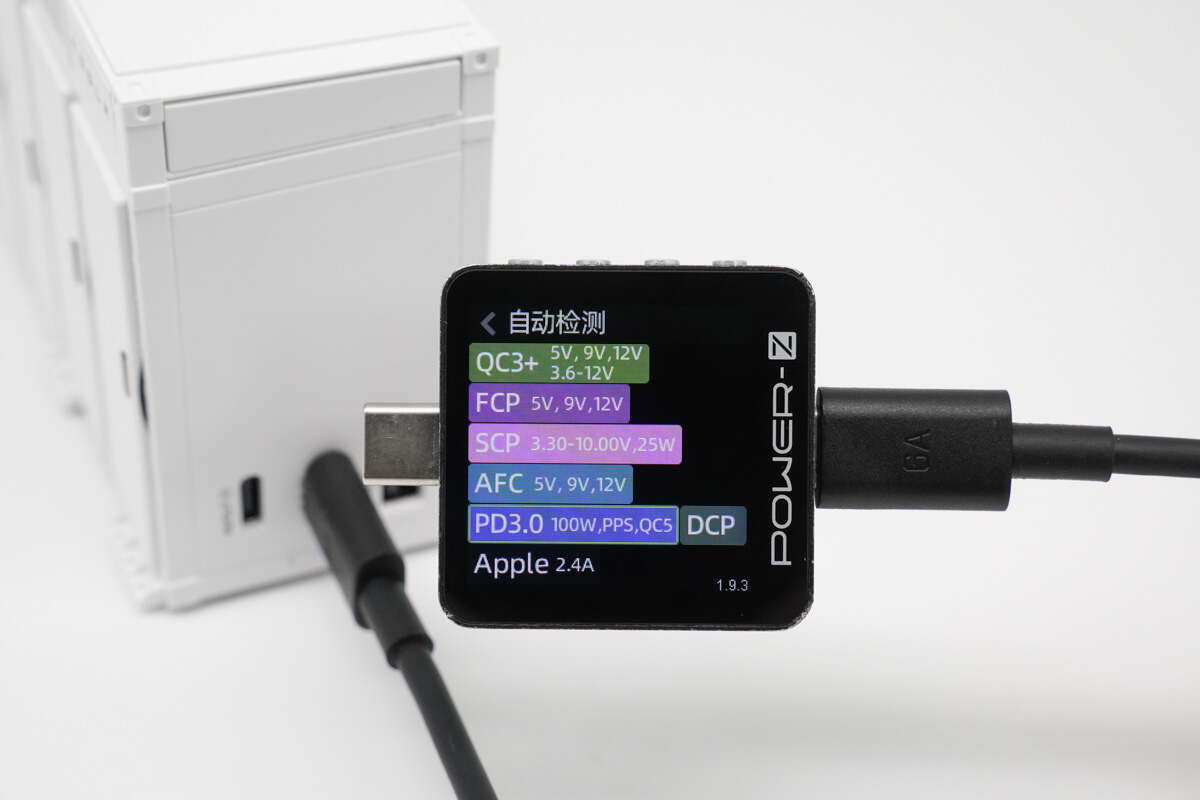
ChargerLAB POWER-Z KM003C shows that USB-C2 can support QC3+, FCP, SCP, AFC, PD3.0, PPS, QC5, DCP, and Apple 2.4A charging protocols.
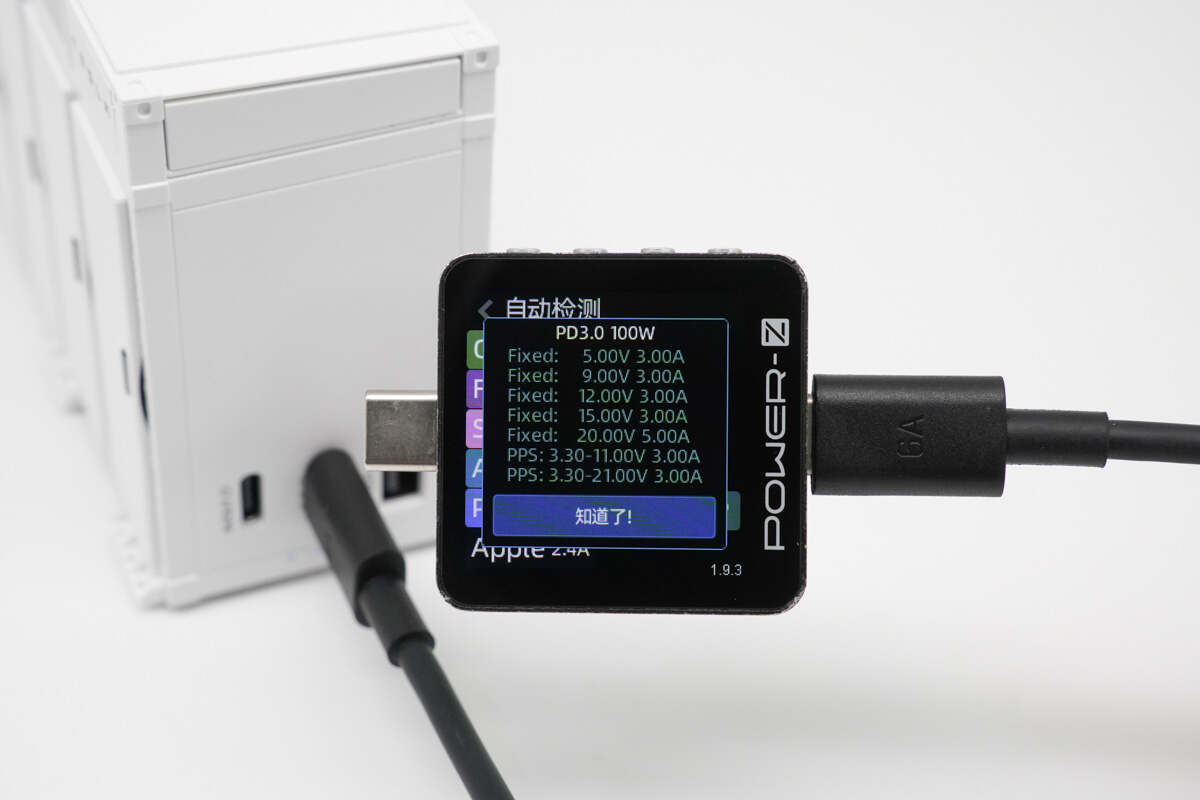
And it has five fixed PDOs of 5V3A, 9V3A, 12V3A, 15V3A, and 20V5A. It has two sets of PPS, which are 3.3-11V/3A, and 3.3-21V/3A.
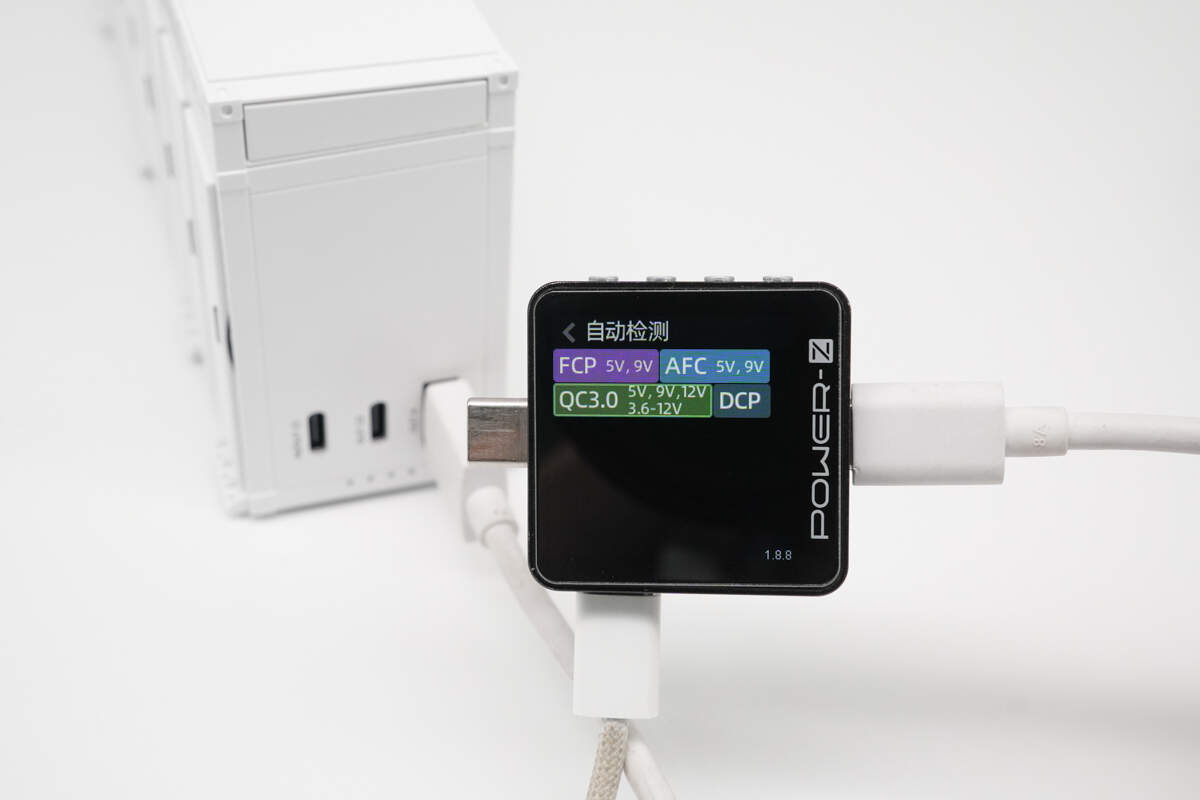
Our tester shows the USB-A port can support FCP, AFC, QC3.0, and DCP charging protocols.
Charging Test
Now, let's take a look at its charging test.
Compatibility Test
USB-C1
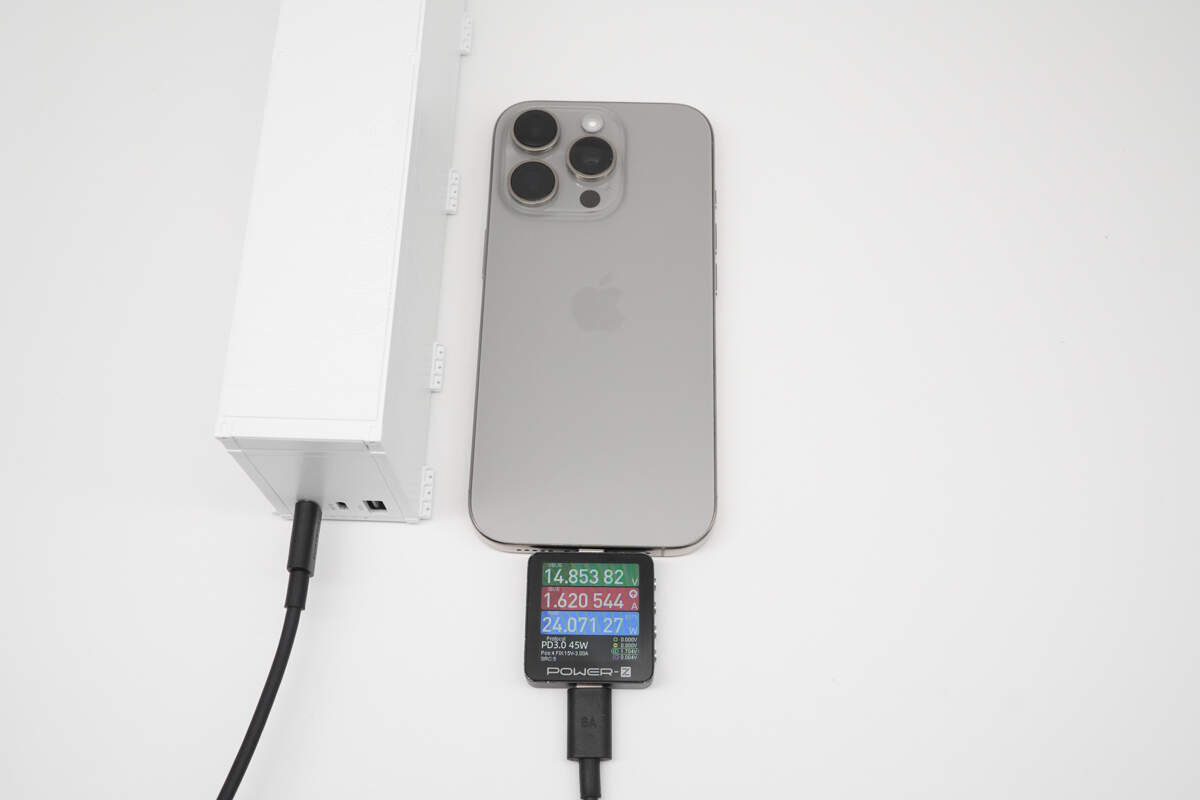
When using the USB-C1 port to charge the iPhone 16 Pro, the power is 14.85V 1.62A 24.07W.
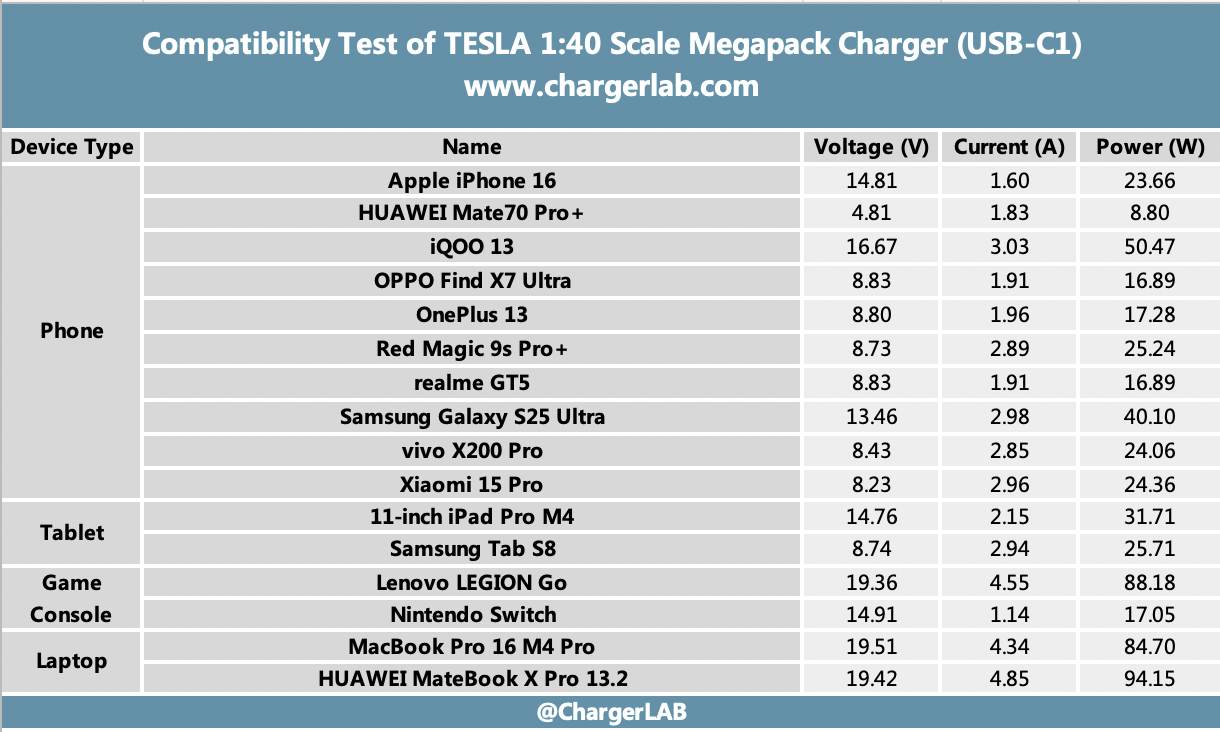
Summarize the data into a table. Most phones can reach 9V voltage. Most game consoles and tablets can reach a voltage of 15V or 20V, and laptops can reach a voltage of 20V.
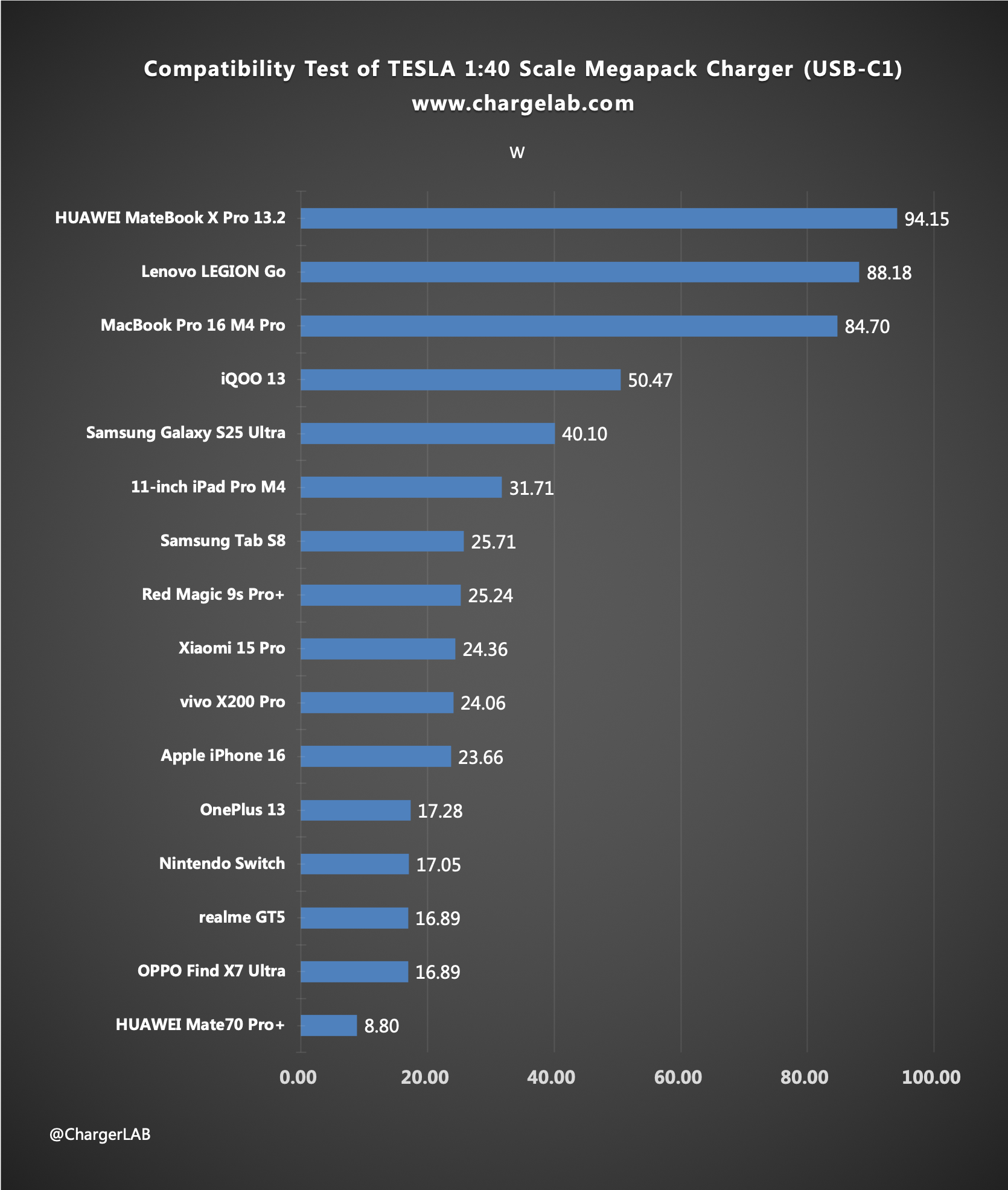
We have compiled all of the test results into a bar chart. The highest charging power is the Huawei MateBook X Pro 13.2, reaching 94.15W. It is compatible with laptops and game consoles, and all tested models can reach a power of more than 80W. For phones that support the PPS protocol, it can reach a higher charging power, such as iQOO13 and Samsung S25 Ultra, and the rest are in the range of 15 to 25W.
USB-C2
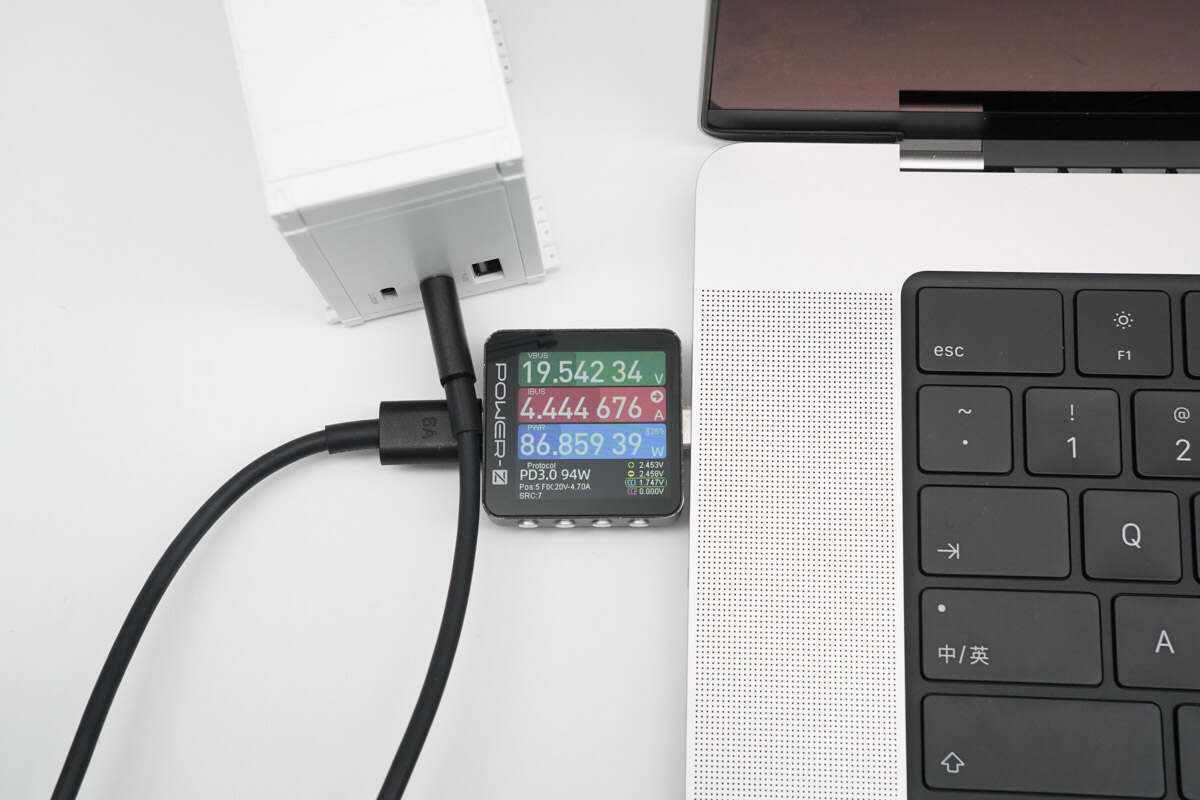
When using the USB-C2 to charge the MacBook Pro 16 M4 Pro, the power is 19.54V 4.44A 86.86W.
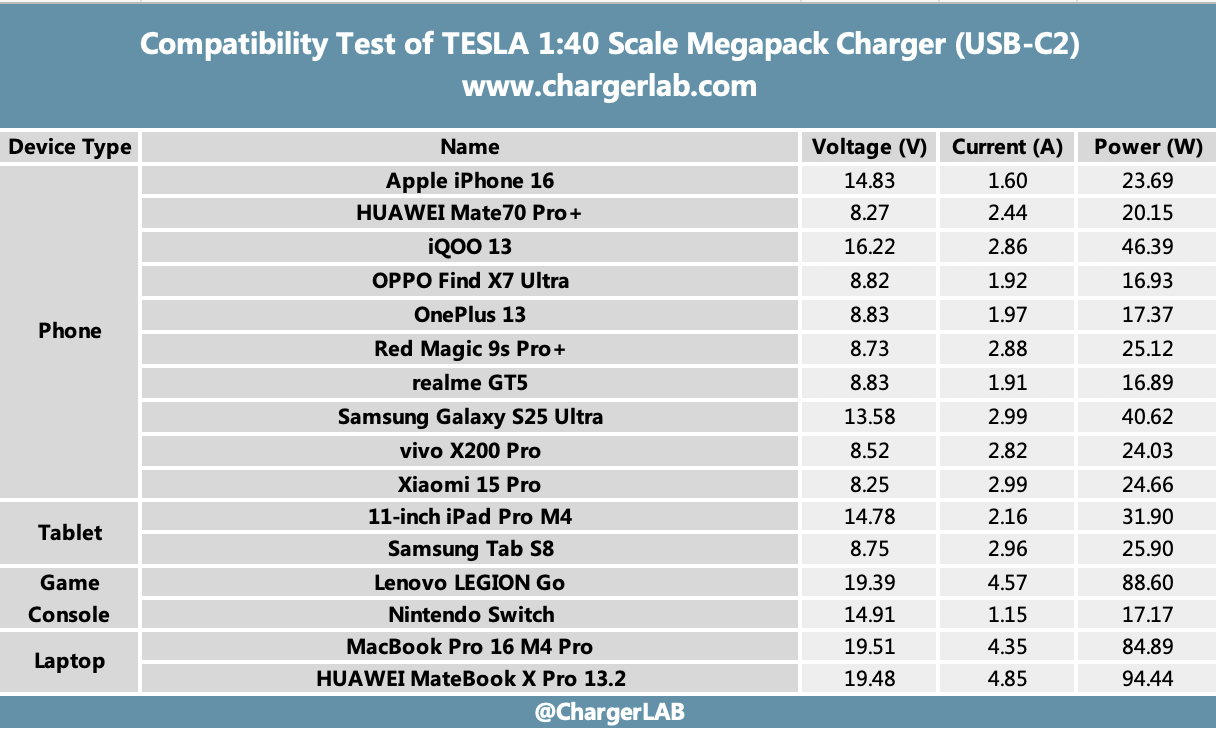
Compared with the USB-C1 port, the USB-C2 port also supports PD100W output power, but it supports SCP, AFC, and other protocols. The test results are similar to those of USB-C1.
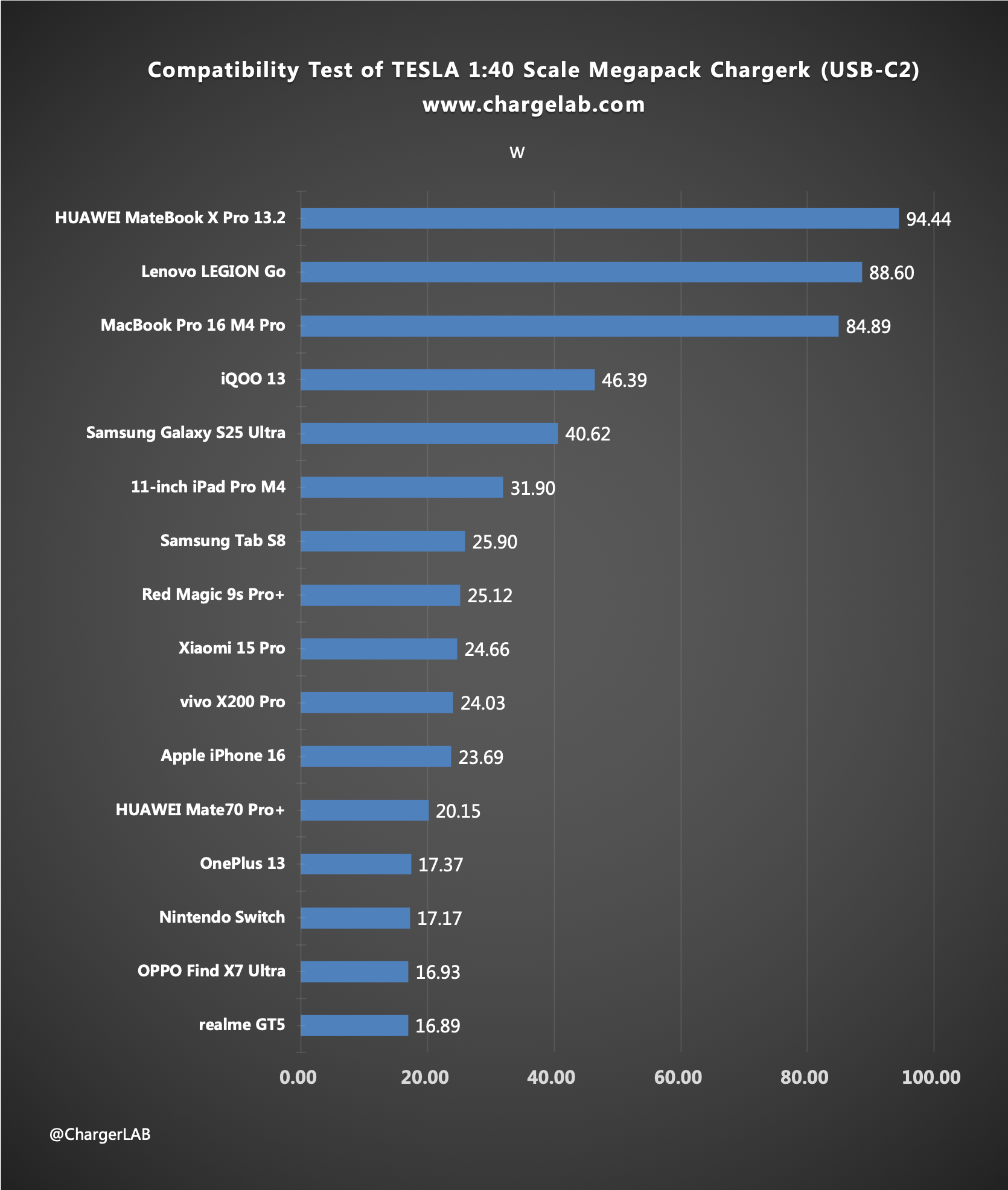
We have compiled all of the test results into a bar chart. The Huawei MateBook X Pro 13.2 also has the highest charging power, reaching 94.44W.
USB-A
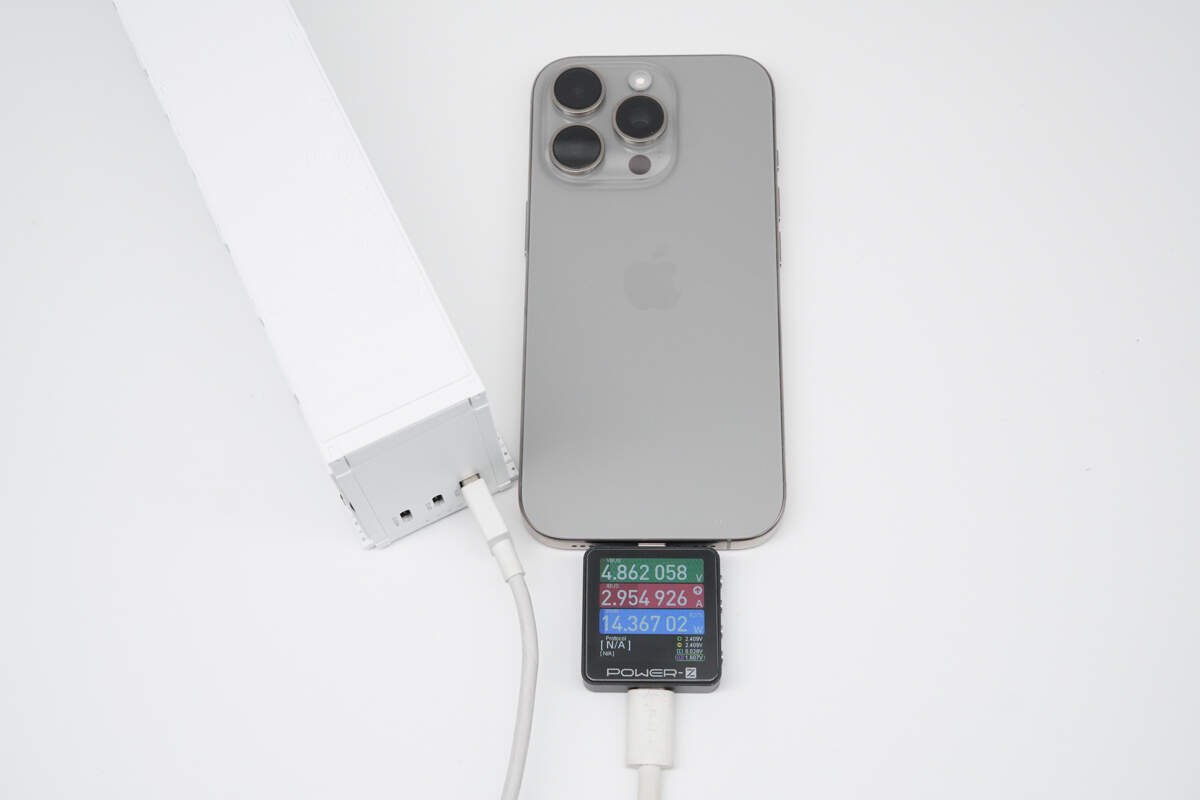
When using the USB-A to charge the iPhone 16 Pro, the power is 4.86V 2.96A 14.37W.
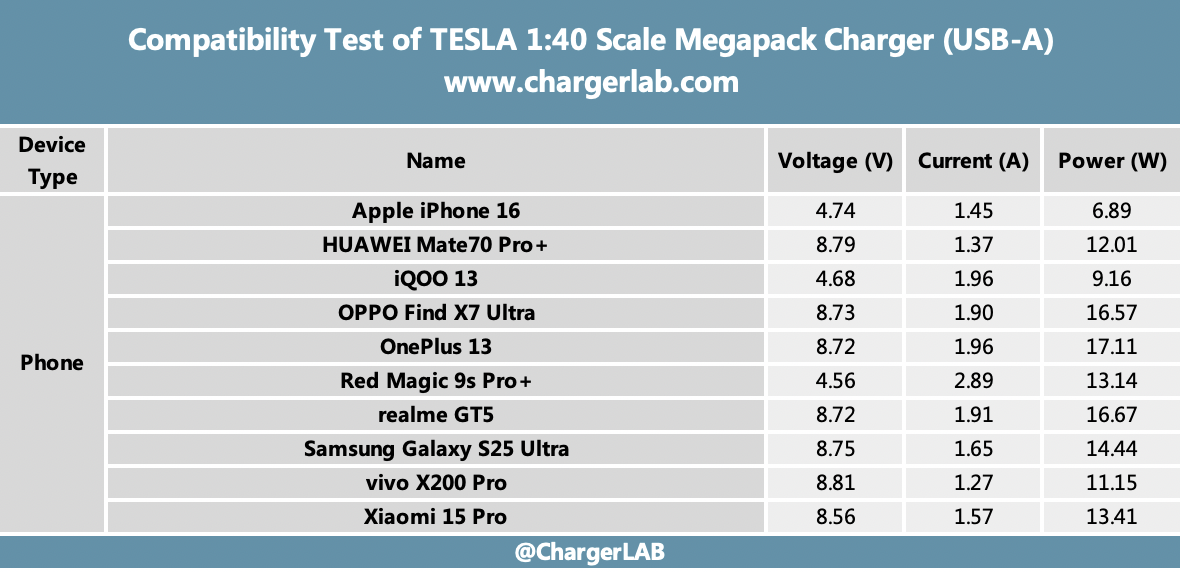
As you can see, there is no compatibility issue. The devices tested reached 9V or 5V respectively.
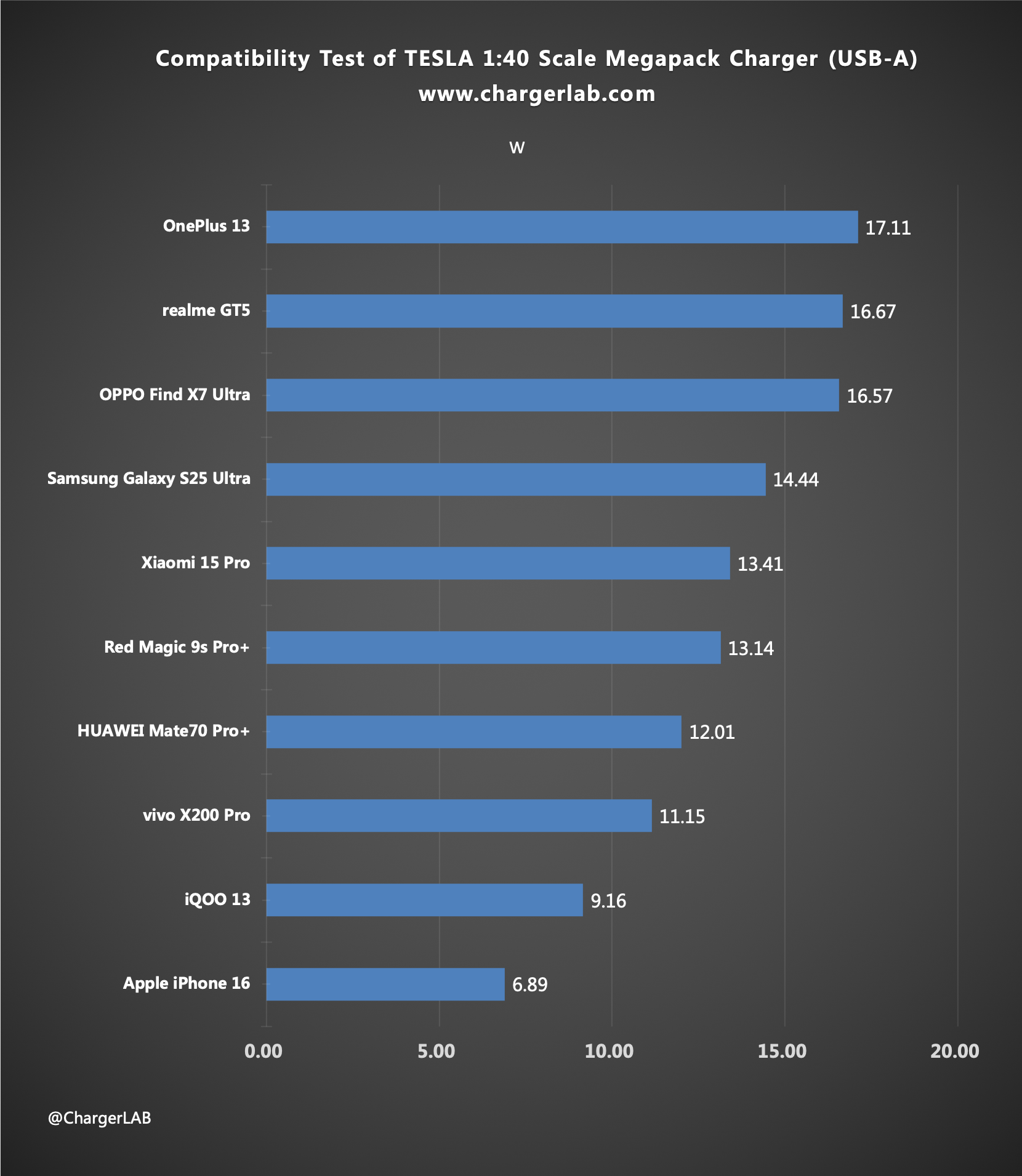
We have compiled all of the test results into a bar chart. OPPO models are ranked at the front, with power ranging from 16 to 17W, while the remaining models are in the 9 to 15W range.
Multi-port Output Test
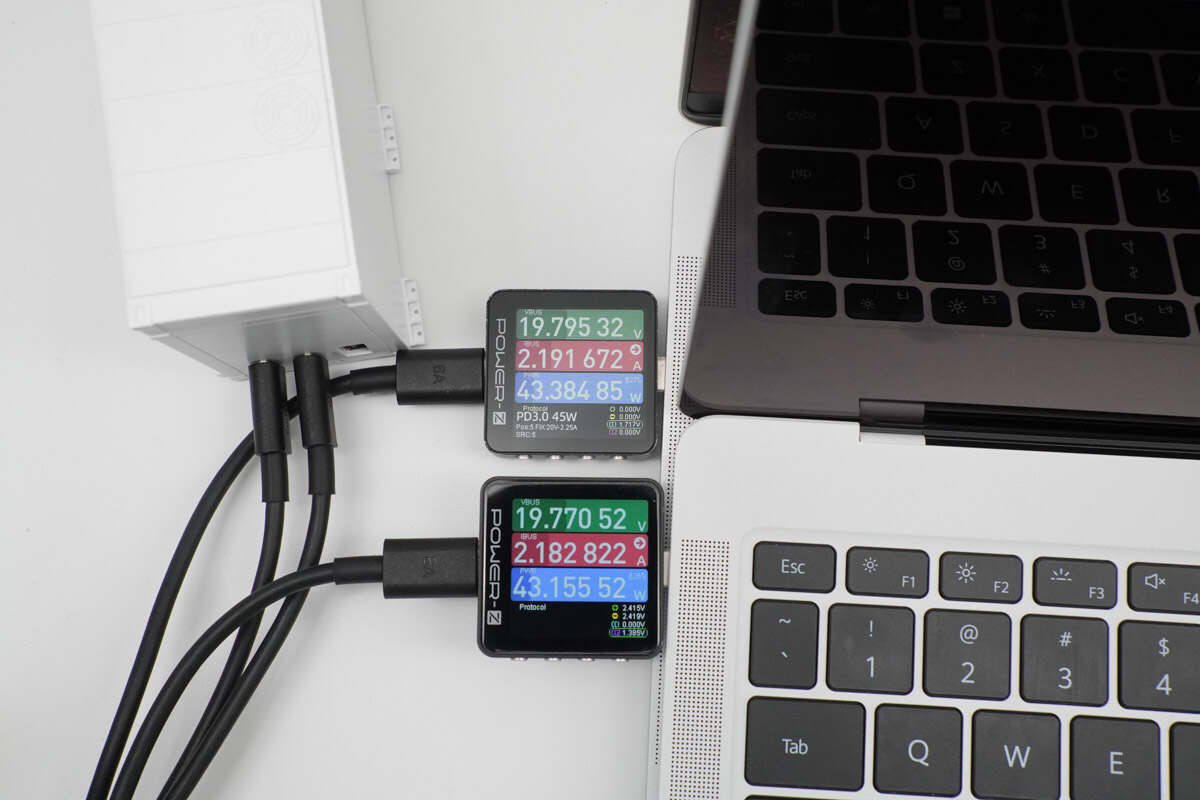
When the two USB-C ports are outputting at the same time, the output power of USB-C1 is 43.38W and the output power of USB-C2 is 43.16W.
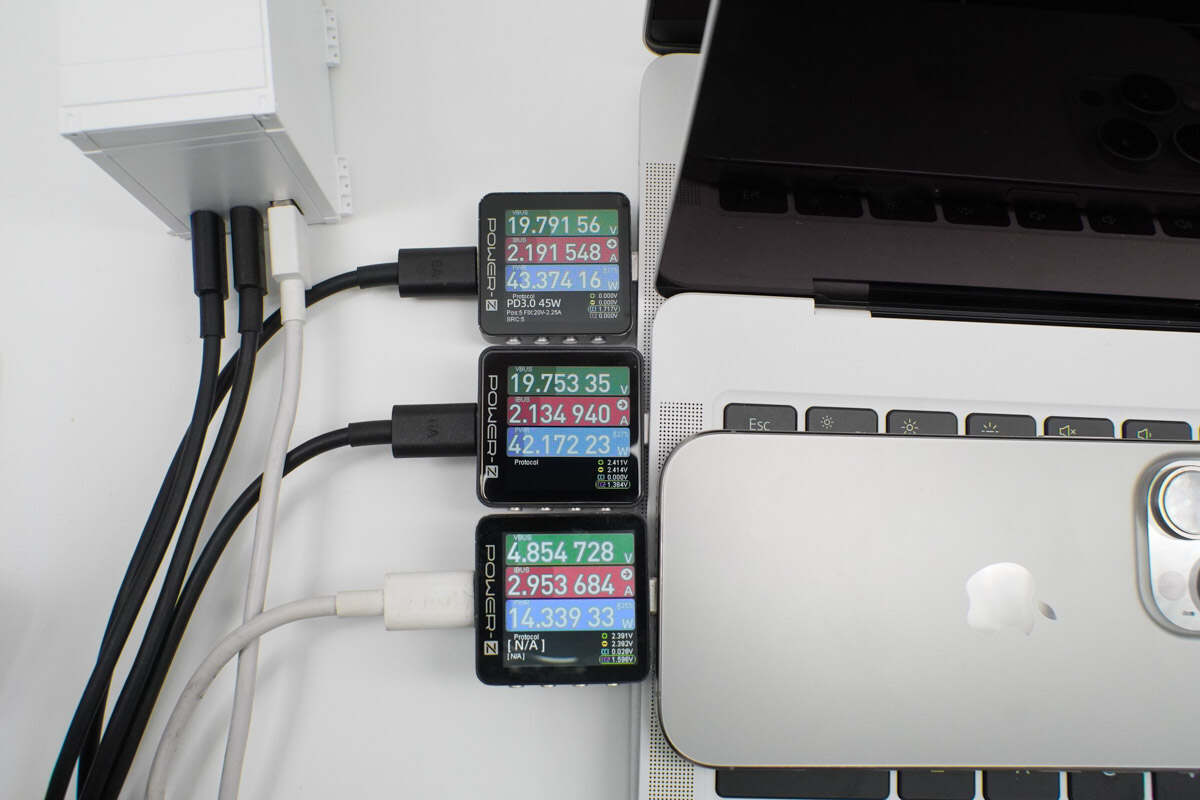
When the three ports output at the same time, the output power of USB-C1 is 43.37W, the output power of USB-C2 is 42.17W, and the output power of USB-A is 14.34W.
Simultaneous Charge and Discharge Test
We will test the output power while charging it.
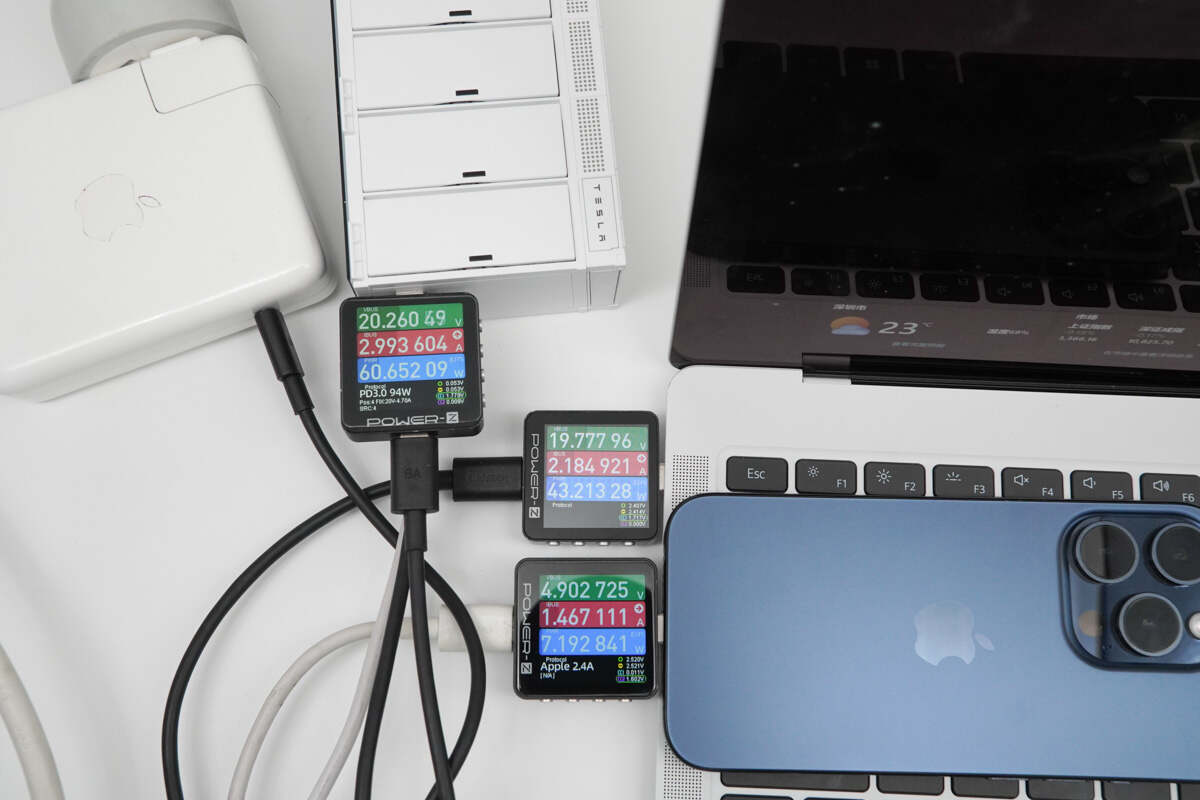
The input power is 60.65W. The output power of the USB-C2 is 43.21W, and the output power of the USB-A is 7.19W.
Full Charging Test
Next, we'll use the Apple 140W charger to fully charge it. They will be put into a 25°C (77℉) thermotank throughout the test. Here is the charging curve made by the PC software of KM003C.
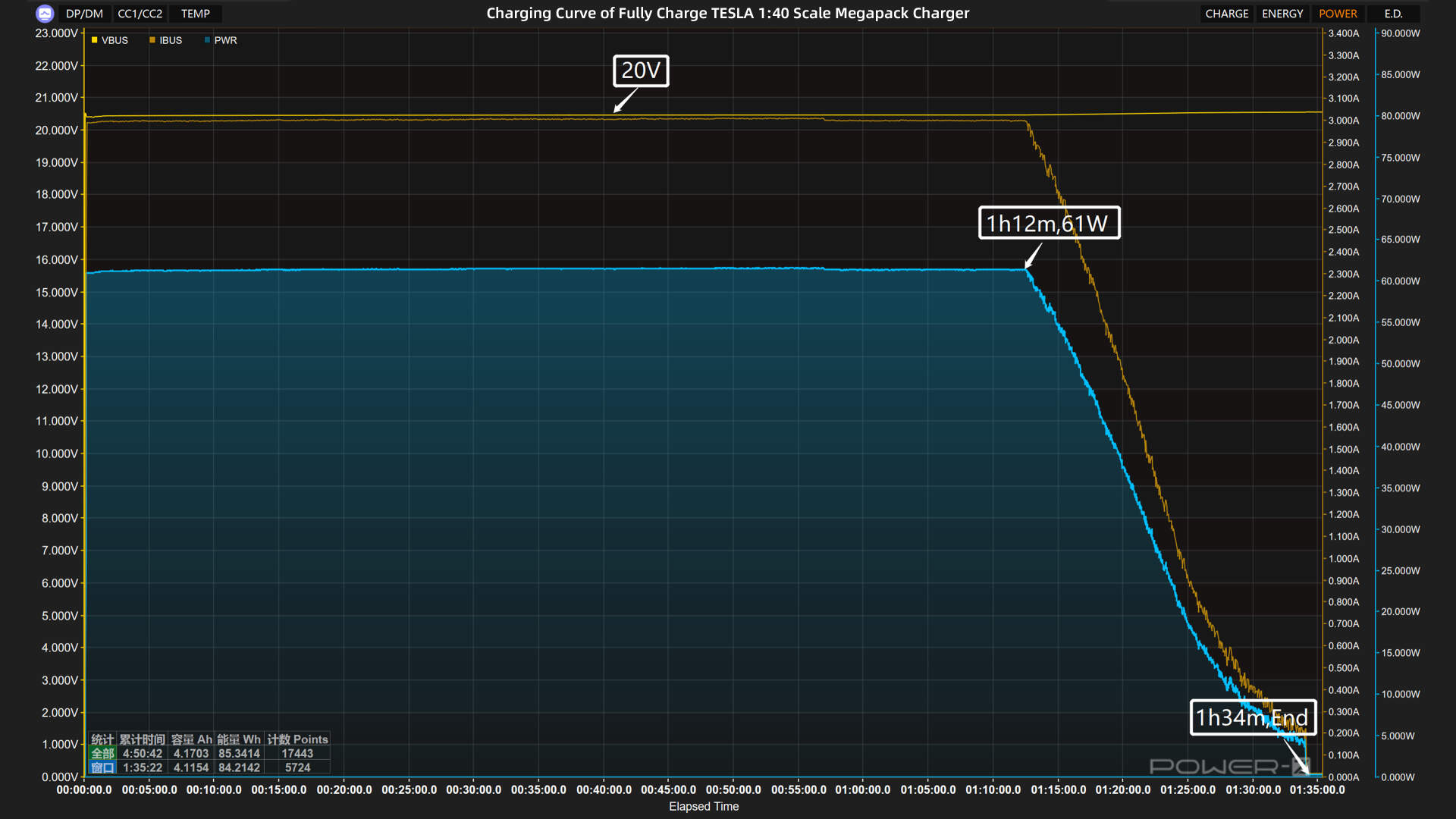
The voltage is always around 20V. The power is around 61W for the first 1 hour and 12 minutes. Then, the power drops to almost zero. It takes 1 hour and 34 minutes to be fully charged.
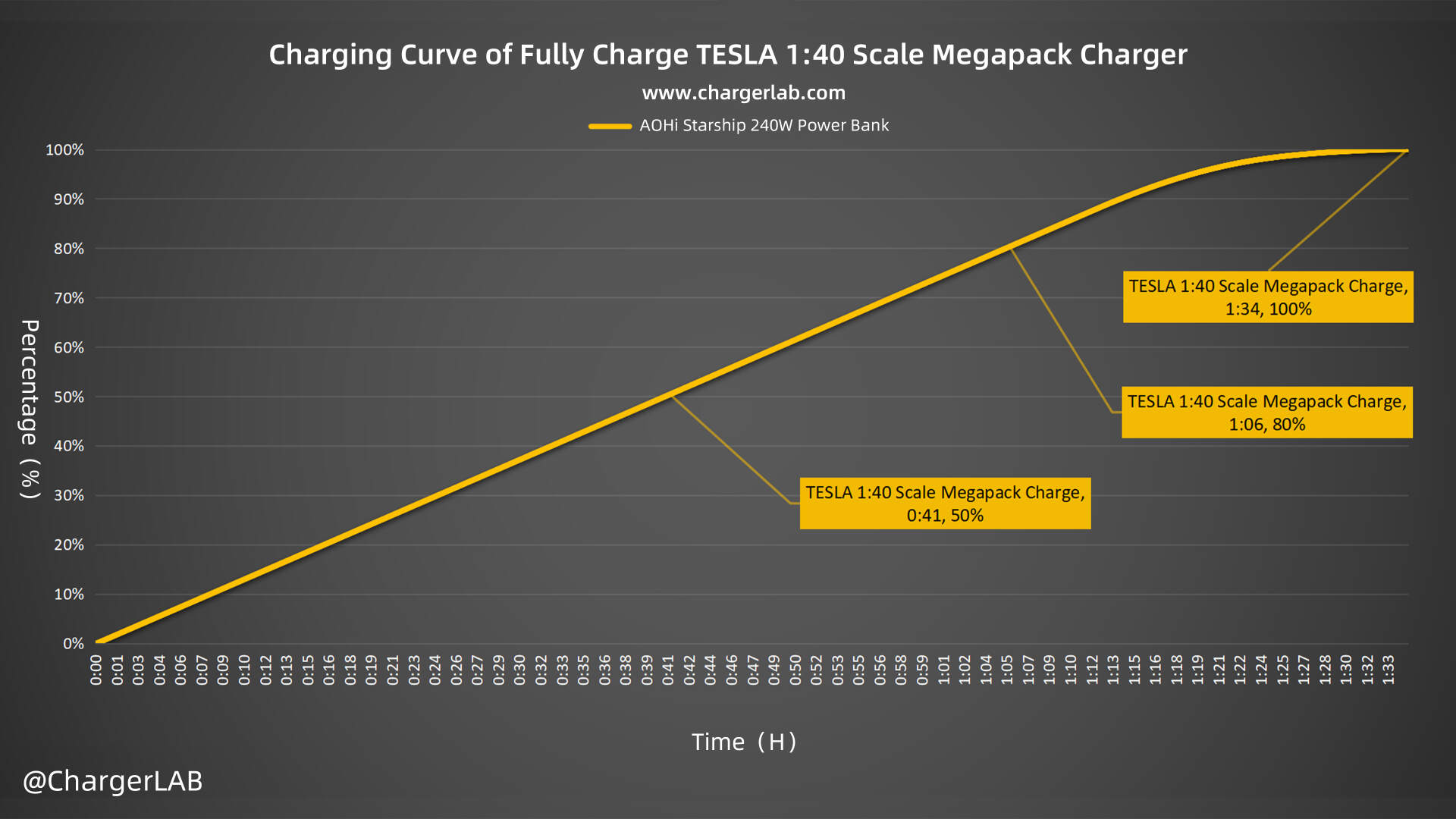
It can be charged to 50% in 41 minutes and 80% in 1 hour and 6 minutes, and it reaches 100% in 1 hour and 34 minutes.
Output Efficiency Test
Output efficiency is an important factor in assessing the quality of a power bank. Higher output efficiency indicates a higher conversion rate and less heat generation. We tested this power bank's output efficiency at different power levels because efficiency varies at different output levels.
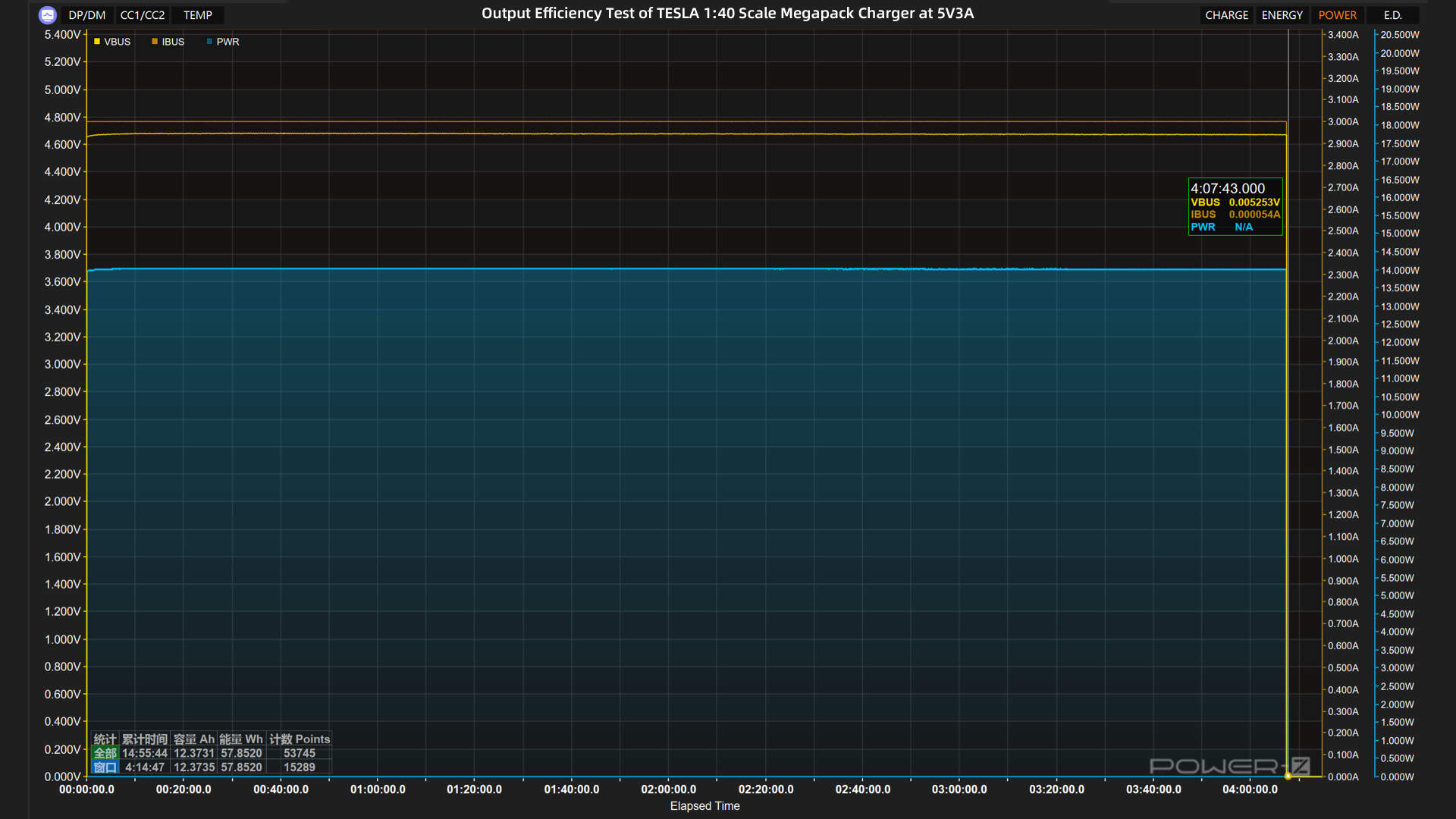
First, let the power bank output at 5V3A 15W, and the output ends at 4 hours and 7 minutes. The actual energy released is about 57.85Wh. Its efficiency when output at 15W is about 57.85/76.65=75.47%.
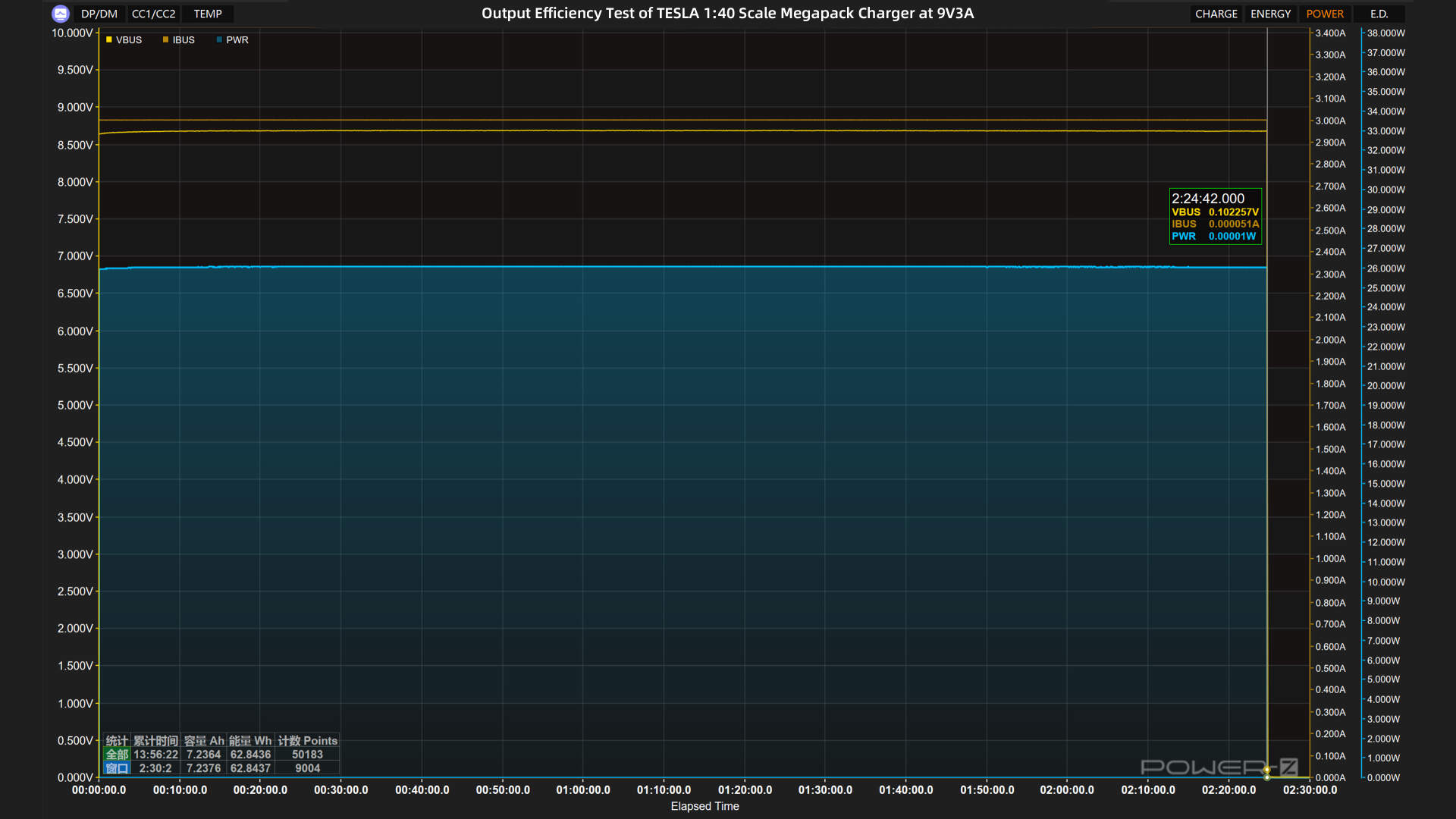
Let the power bank output at 9V3A 27W, and the output ends at 2 hours and 24 minutes. The actual energy released is about 62.84Wh. Its efficiency when output at 27W is about 62.84/76.65=81.98%.
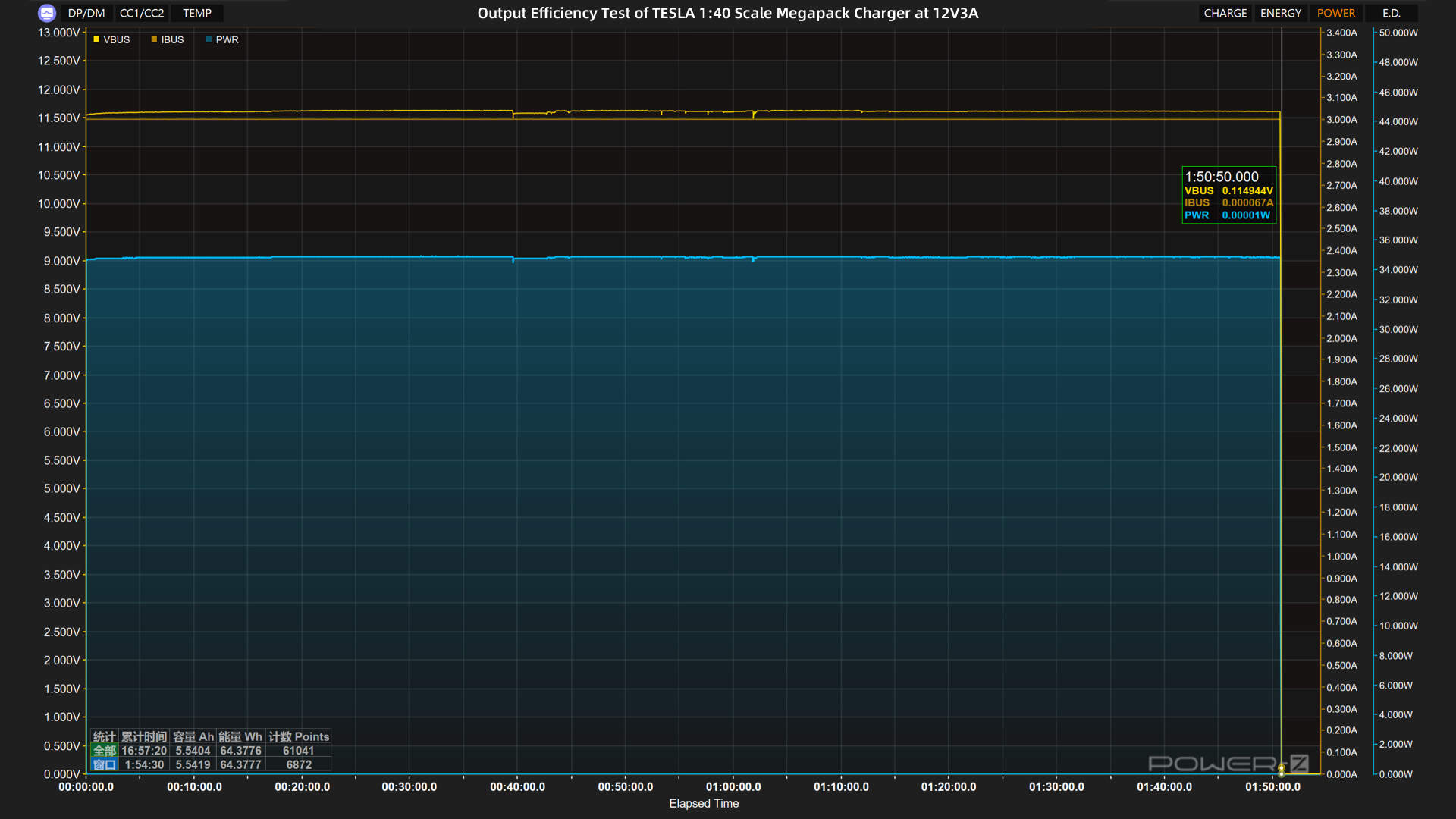
Let the power bank output at 12V3A 36W, and the output ends at 1 hour and 50 minutes. The actual energy released is about 64.38Wh. Its efficiency when output at 36W is about 64.38/76.65=84%.
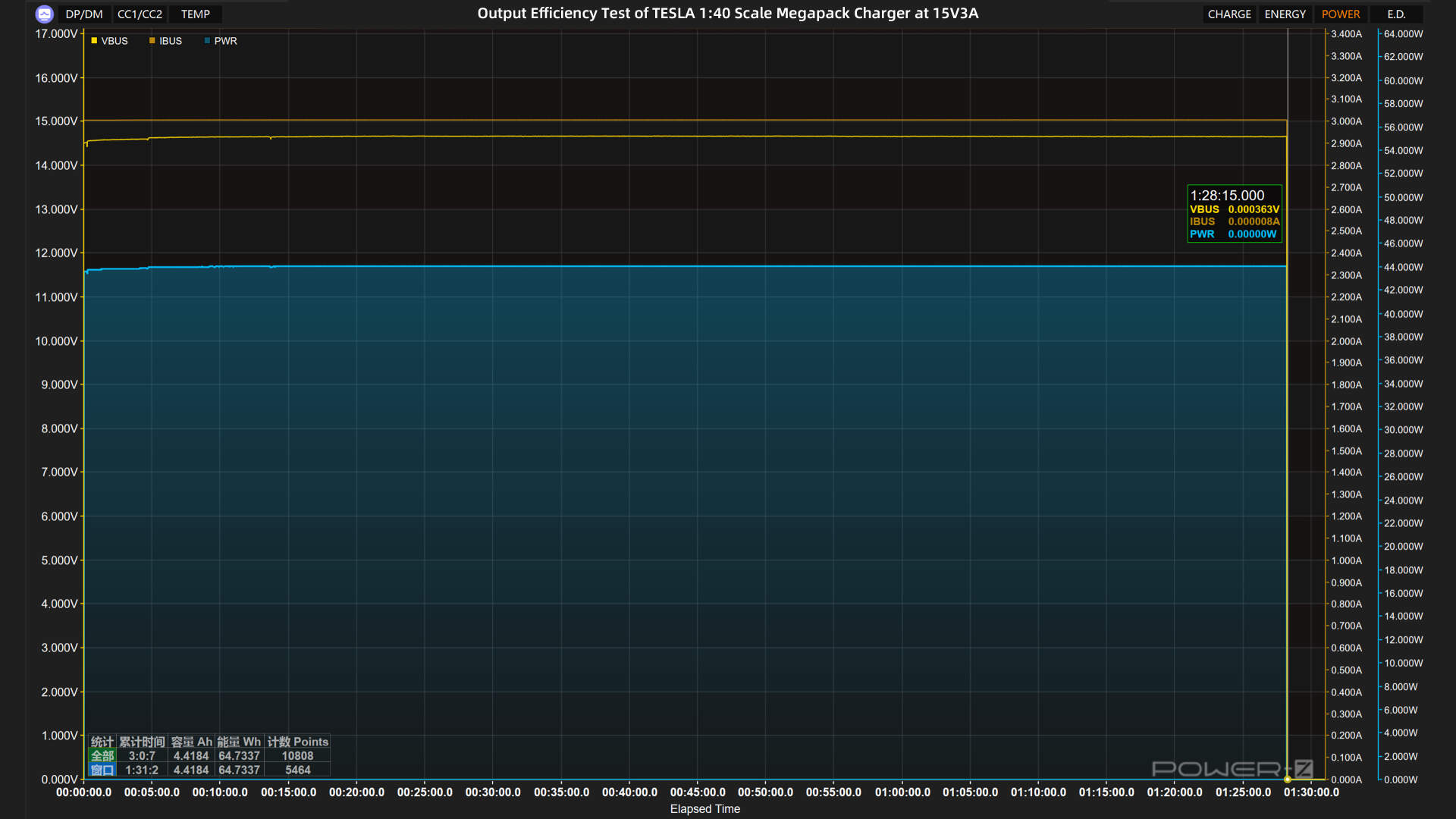
Let the power bank output at 15V3A 45W, and the output ends at 1 hour and 28 minutes. The actual energy released is about 64.74Wh. Its efficiency when output at 45W is about 64.74/76.65=84.46%.
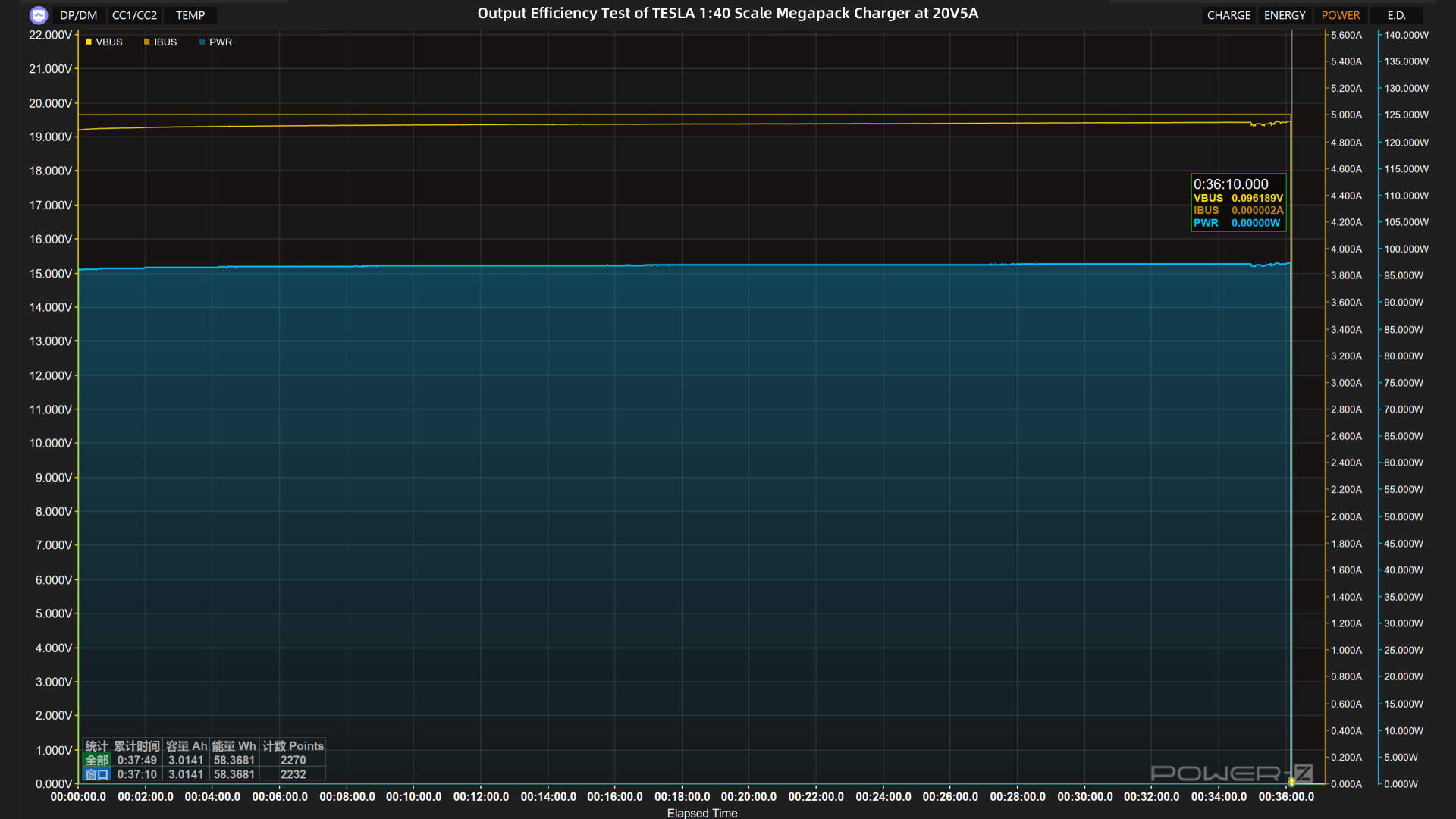
Last, let the power bank output at 20V5A 100W, and the output ends at 36 minutes. The actual energy released is about 58.37Wh. Its efficiency when output at 100W is about 58.37/76.65=76.15%.
Ripple Test
Power adapters rely on switch-mode power supplies, which means that the output from the transformer's secondary winding is not direct current and must be rectified and filtered by capacitors before being outputted. As a result, ripples can exist in the output signal. To evaluate the quality of the adapter's output, ChargerLAB employs an oscilloscope to test the ripple value of the converter's output and compare it with industry standards. In general, the lower the ripple, the higher the output quality.
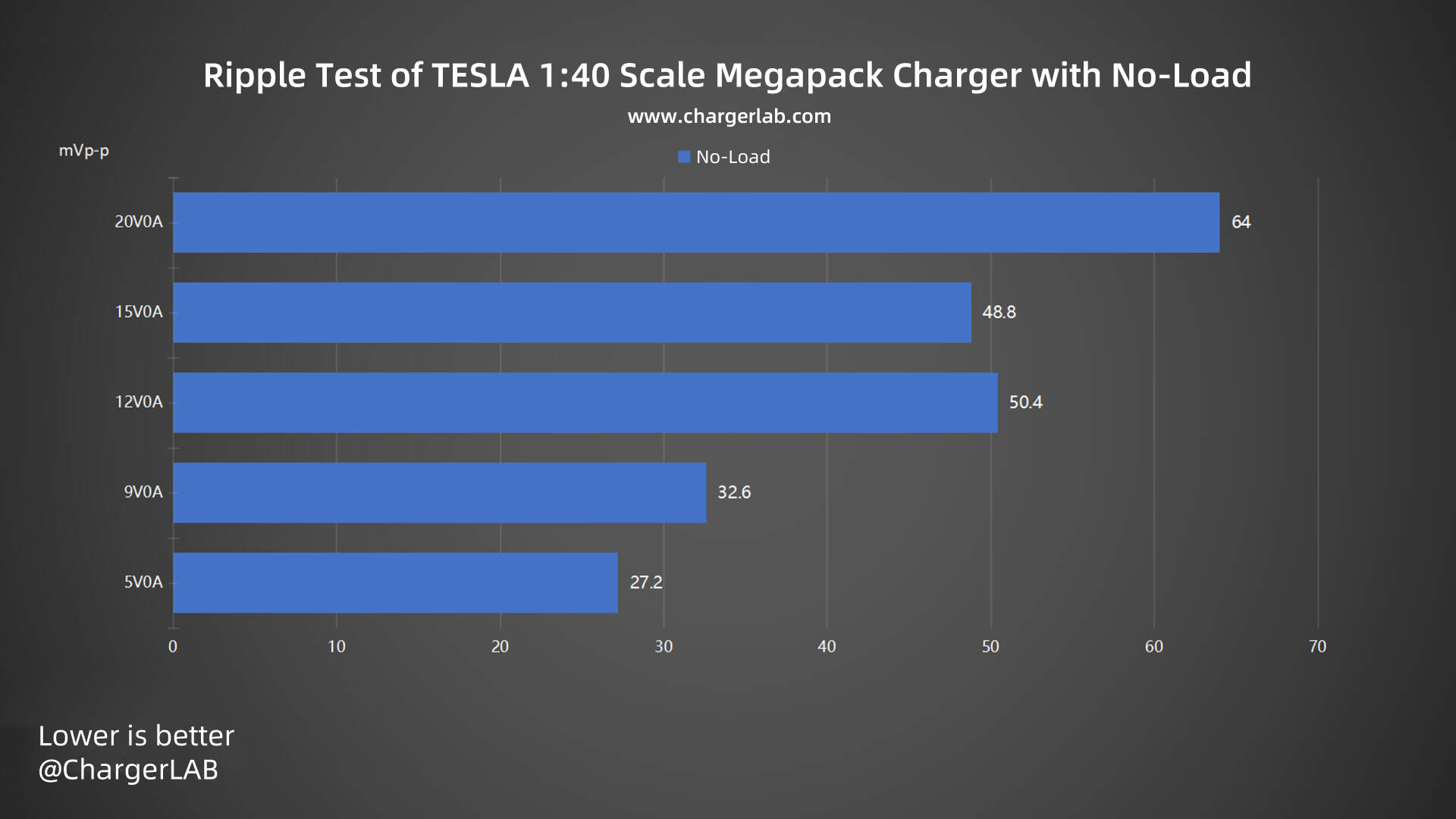
Firstly, let's check out its ripple without load. When the output is 5V 0A, the lowest ripple is around 27.2 mVp-p. When the output is 20V 0A, the highest ripple is around 64 mVp-p.
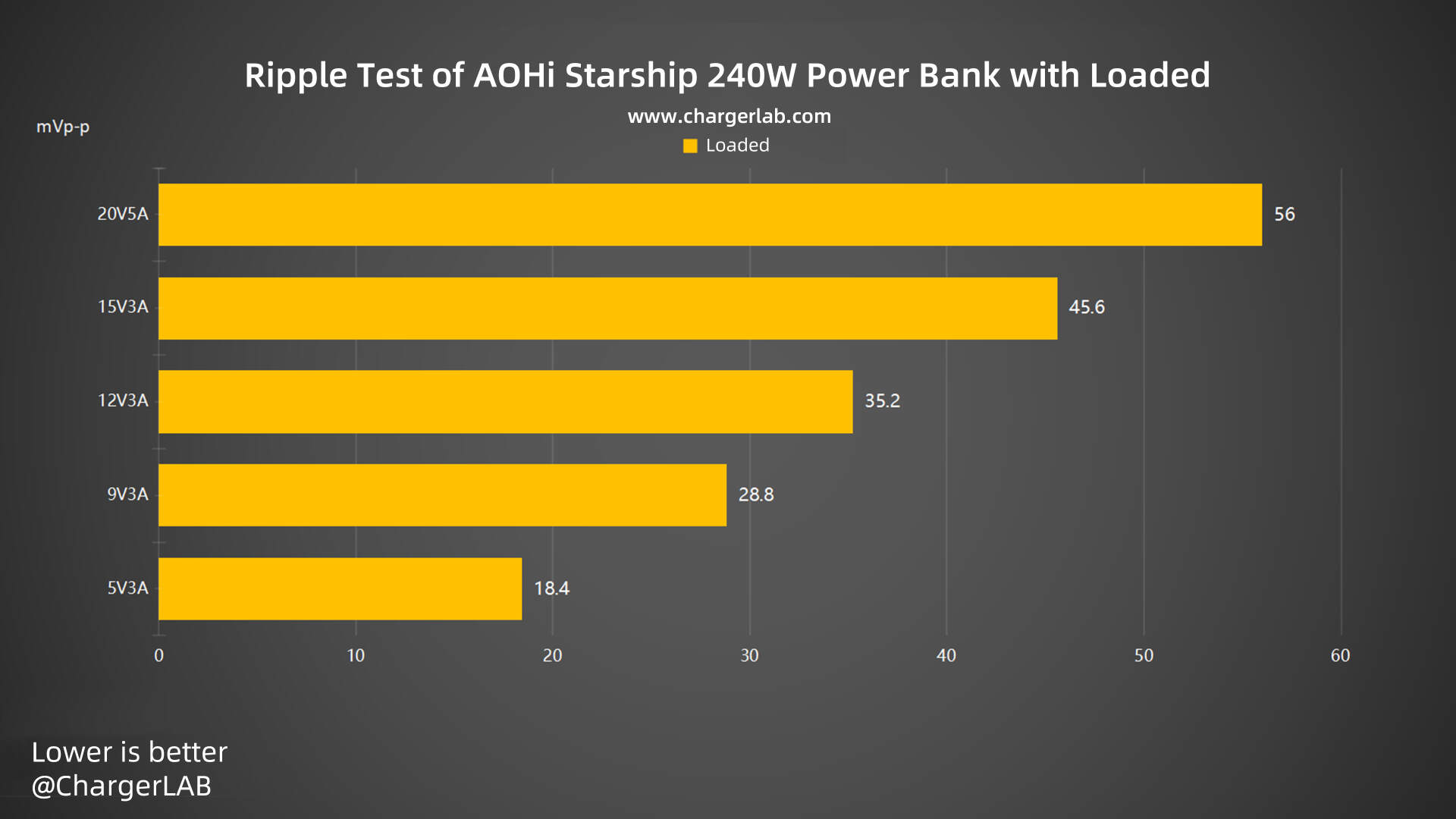
Then, move to the ripple test when loaded. When the output is 20V 5A, the highest ripple is 56 mVp-p. When the output is 5V 3A, the lowest ripple is 18.4 mVp-p. Overall, the ripple performance is good.
Temperature Test
Then, we are going to the maximum temperature test. We put the power bank into a 25°C (75℉) thermotank. And record the maximum temperature on the front and back after 30 minutes under a load of 20V5A 100W.
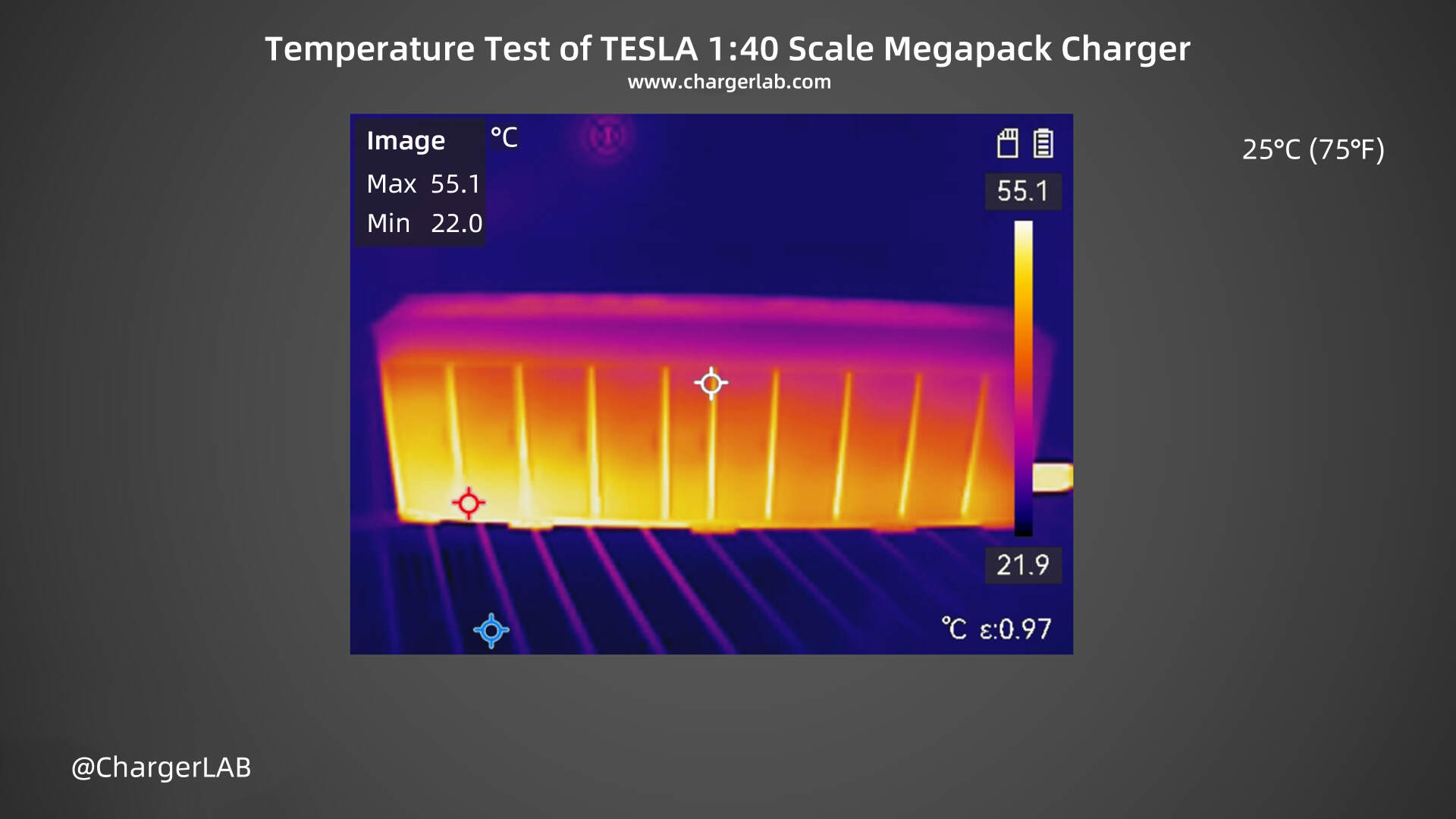
After 30 minutes of discharge, the maximum temperature on the front is 55.1℃ (131.18 ℉), and the heat is mainly concentrated in the lower left corner.
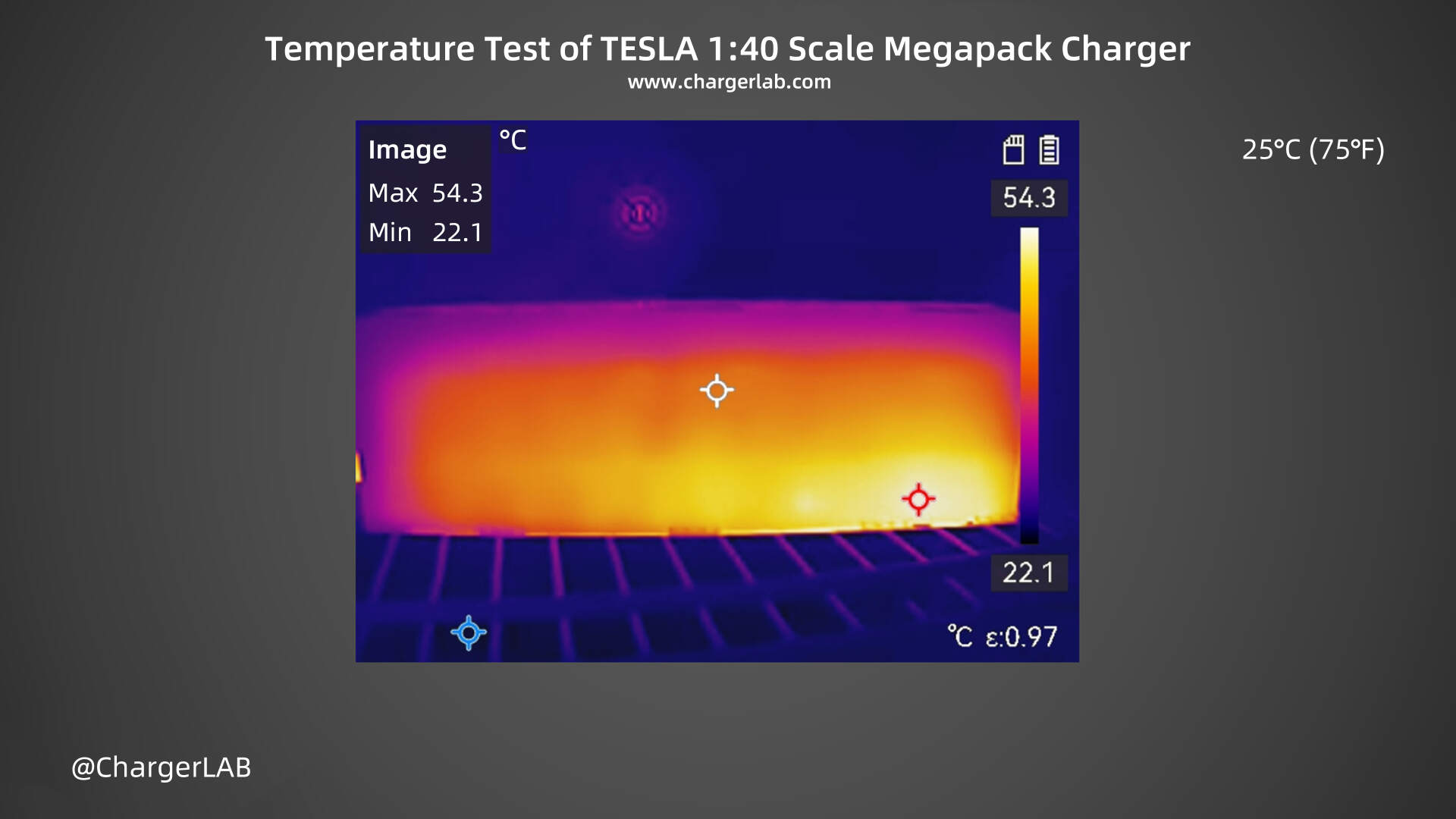
The maximum temperature on the back is 54.3℃ (129.74 ℉).
Summary of ChargerLAB
With the release of the 1:40 Scale Megapack Charger, Tesla brings the design language of its utility-scale Megapack energy storage system into the realm of consumer electronics for the first time. As a flagship product in the global energy storage industry, the Megapack’s industrial design has been distilled into a palm-sized form—retaining the brand’s core DNA in energy innovation while filling a gap in Tesla’s lineup of high-end portable power solutions.
It has good compatibility and can meet the charging needs of most devices. According to the test results, it is recommended to use the USB-C2 port for charging, which can provide a better charging experience. The total output power of the two USB-C ports can reach 90W, and the total output of the three ports can reach 100W.
It takes 1 hour and 34 minutes to be fully charged with the Apple 140W charger. In the output efficiency test, except for 20V5A and 5V3A, the conversion efficiency can reach more than 80%, and the highest can reach 85%. In the ripple test, except for 20V0A, the others do not exceed 50mVp-p. After 30 minutes under 100W load, the maximum temperature is around 55℃.
Overall, the TESLA 1:40 Scale Megapack Charger impresses not only with its striking aesthetics but also with its performance in charging speed and thermal management—delivering a top-tier user experience. This product marks Tesla’s entry into the premium portable power market, showcasing the company’s exceptional industrial standards. It's a power bank that seamlessly blends performance, design, and visual appeal into one sleek, high-end package.
Related Articles:
1. Unboxing of Tesla 1:40 Scale Megapack Charger
2. Tesla 1:40-Scale Megapack Portable Charger: Compact Power with High Output for On-the-Go Charging
3. Review of Tesla Wireless Portable Charger

